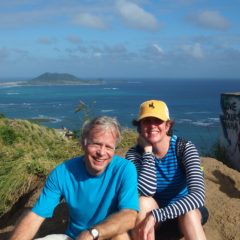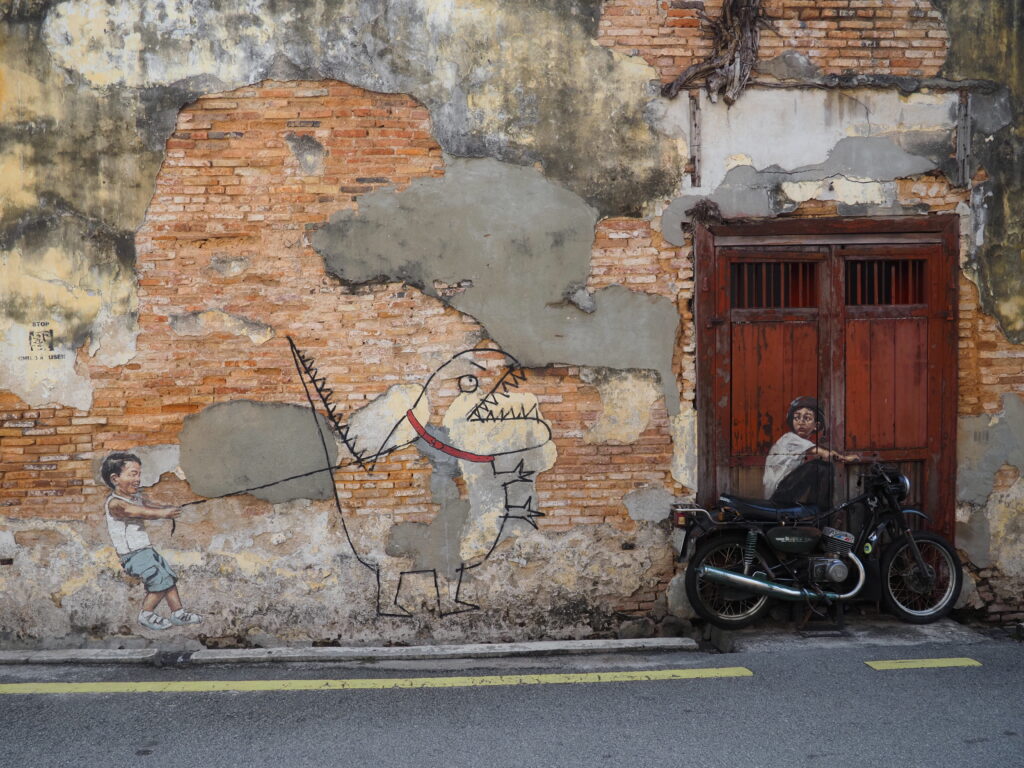
Street art, street food, and a vibrant mix of old and new, clearly skewing to the old and artsy. That’s George Town, Britain’s first outpost in Southeast Asia, named for our George III and founded in 1786 when Francis Light purchased the island for the East India Company from the Sultan of Kedah (who was interested in a bit of protection from the Siamese), literally hacking it out of the jungle.
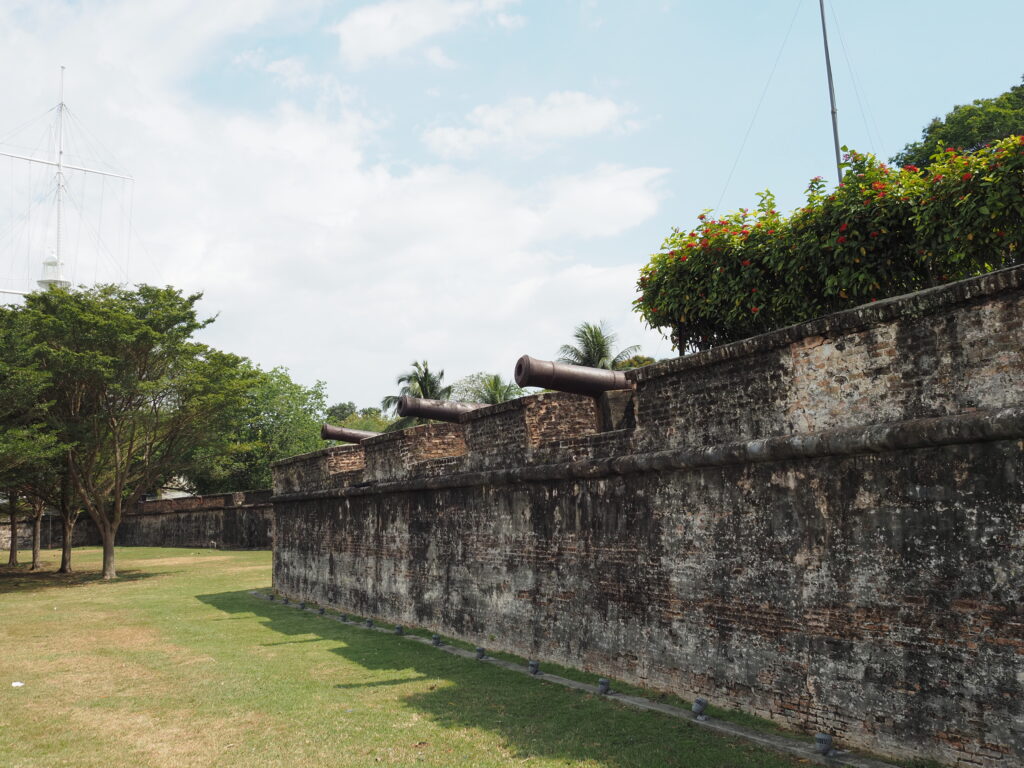
He built a fort and, as they say, the rest is history. It became a thriving commercial hub and people came from all over Asia, plus a lot of Europeans to pursue trade and commerce or to wonder at life in the tropics, early world travelers. We decided to stay at the storied Eastern and Oriental Hotel in the heart of downtown, among whose previous guests were Hermann Hesse and W. Somerset Maugham (more recently a character in Malaysian novelist Tân Twan Eng’s latest).
Hin Bus Depot
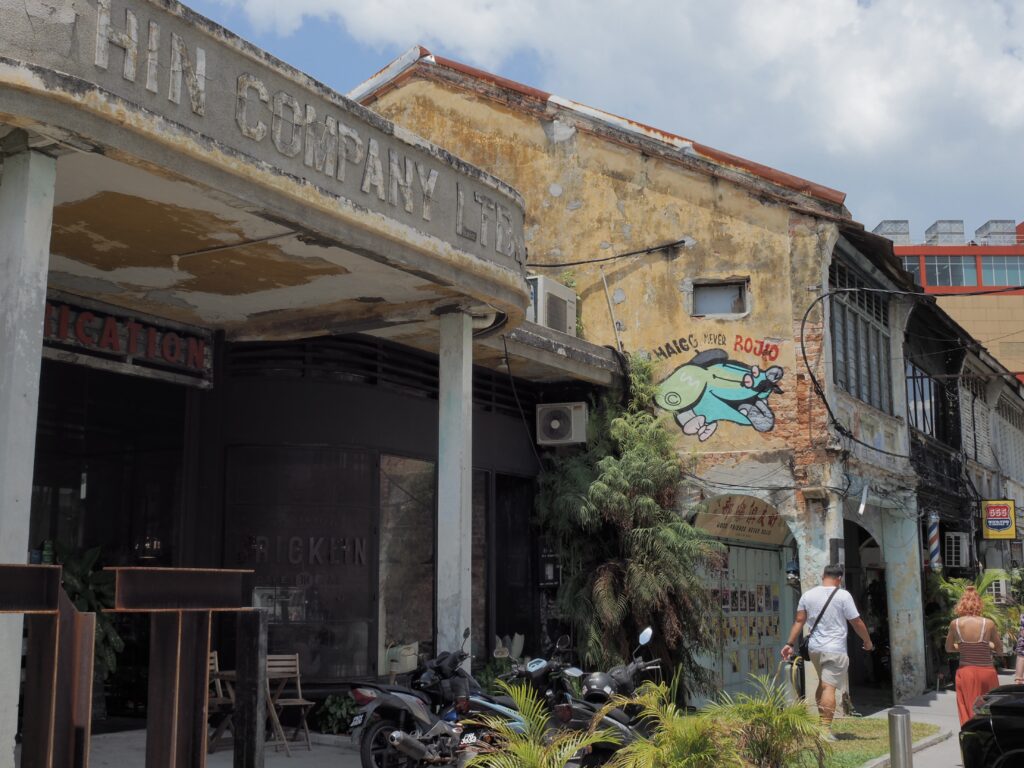
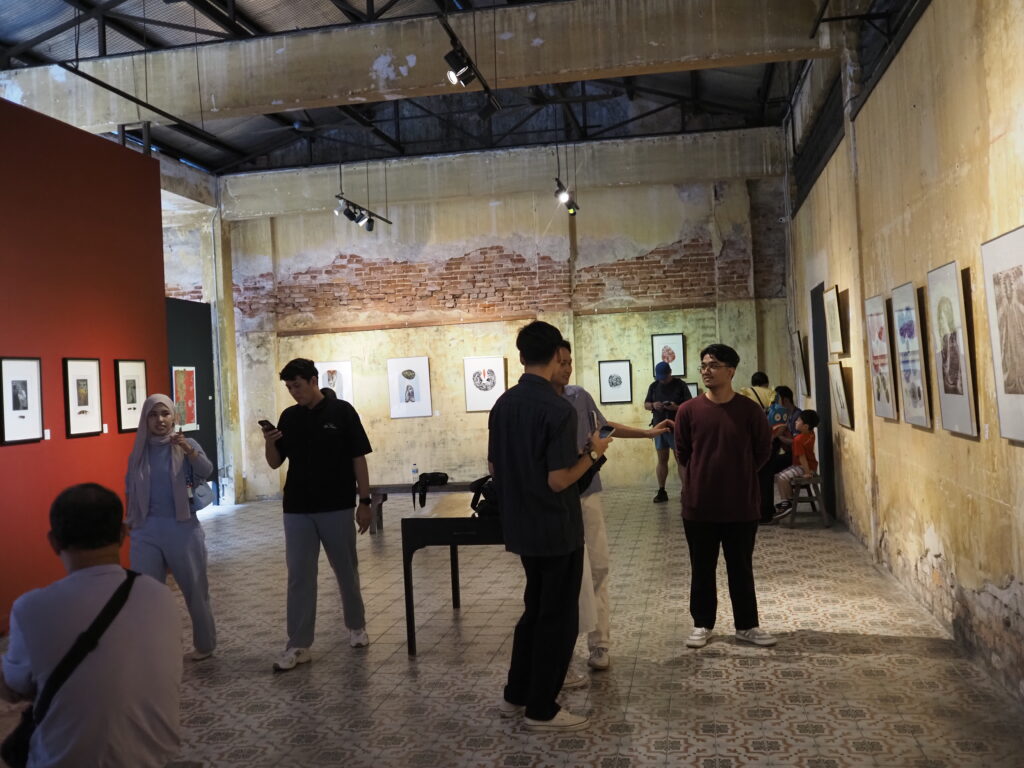
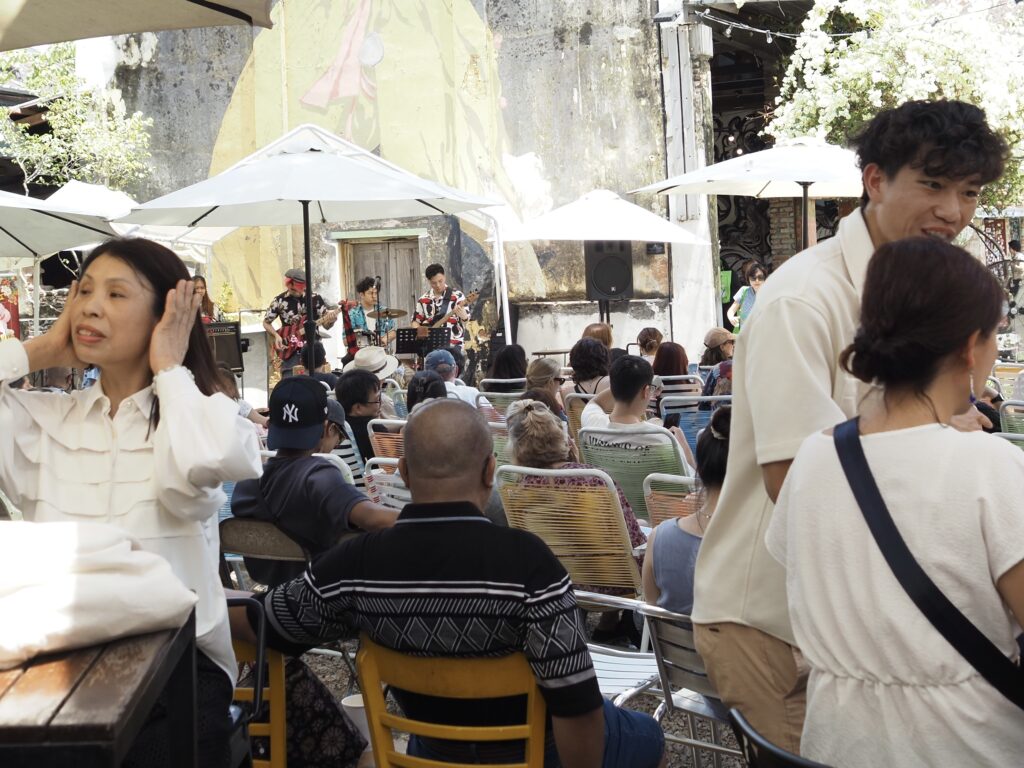

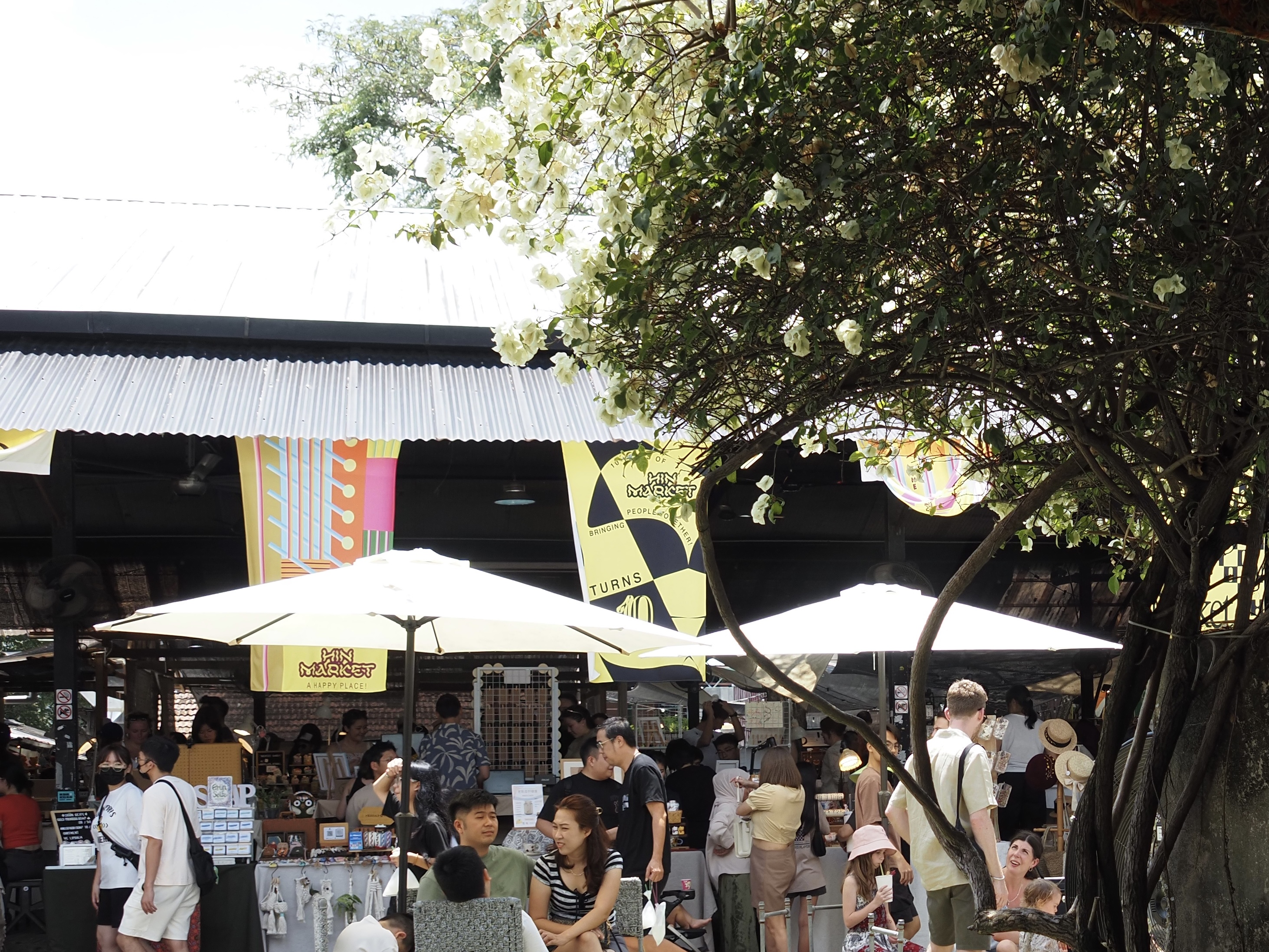



Grabbing a ride share to the edge of downtown, it felt like the essence of George Town was being announced to us as we arrived at the Hin Bus Depot, a bustling place with an art gallery exhibit of interesting prints, lots of vendors with crafty wares (some nice jewelry, a necktie, or perhaps a tattoo?), a fortune teller, inventive foods on the go (Lebanese, Belgian waffles or a pancake burger?), music and a very friendly vibe among a multiethnic crush.
Colonial Architecture

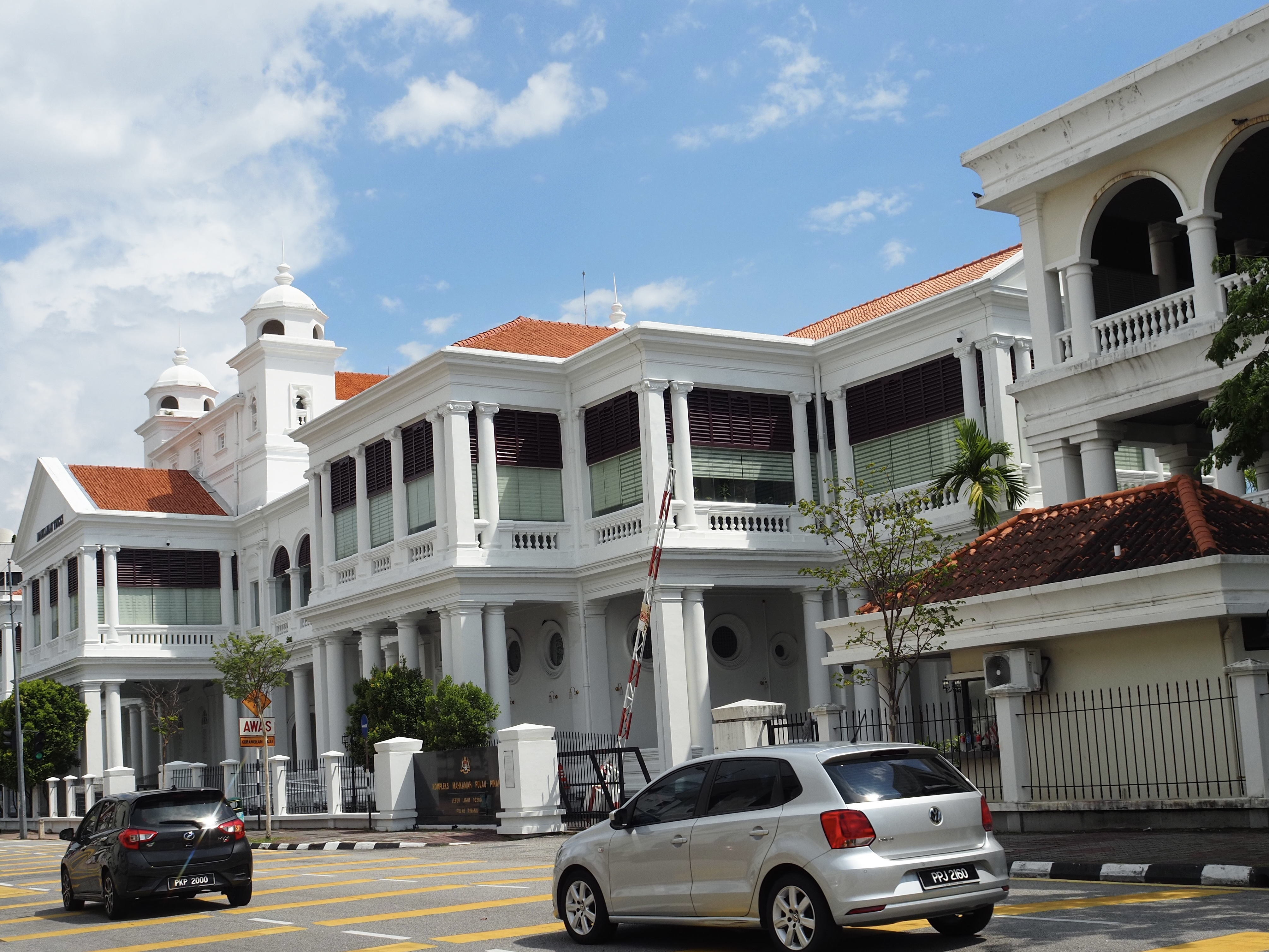


George Town has its handsome colonial buildings. The clock tower commemorates Queen Victoria’s Diamond Jubilee and was donated by Cheah Chen Eok, Esq., a local businessman. It’s slightly cockeyed, having been damaged by bombing in WWII.
Pinang Peranakan Museum
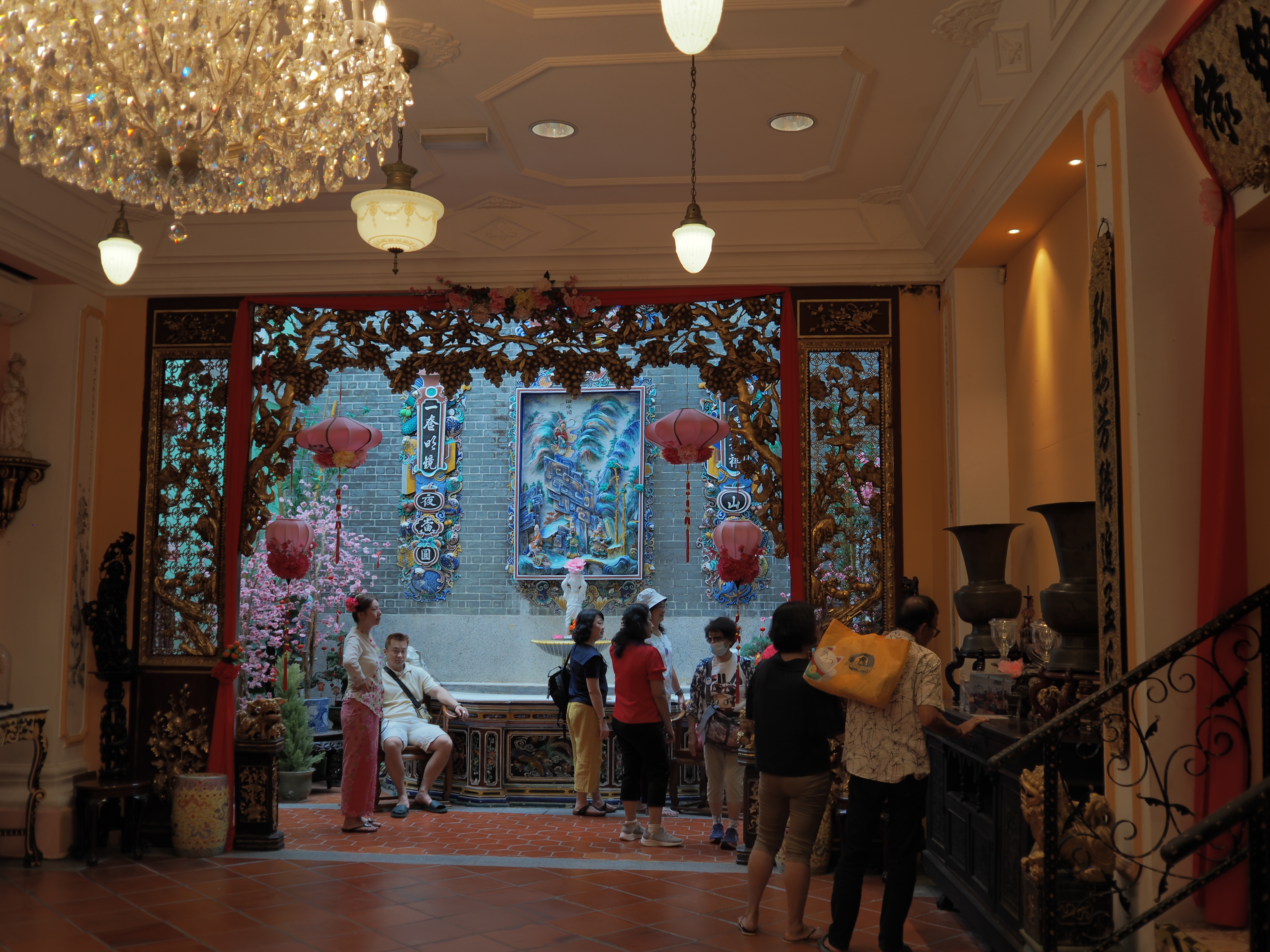
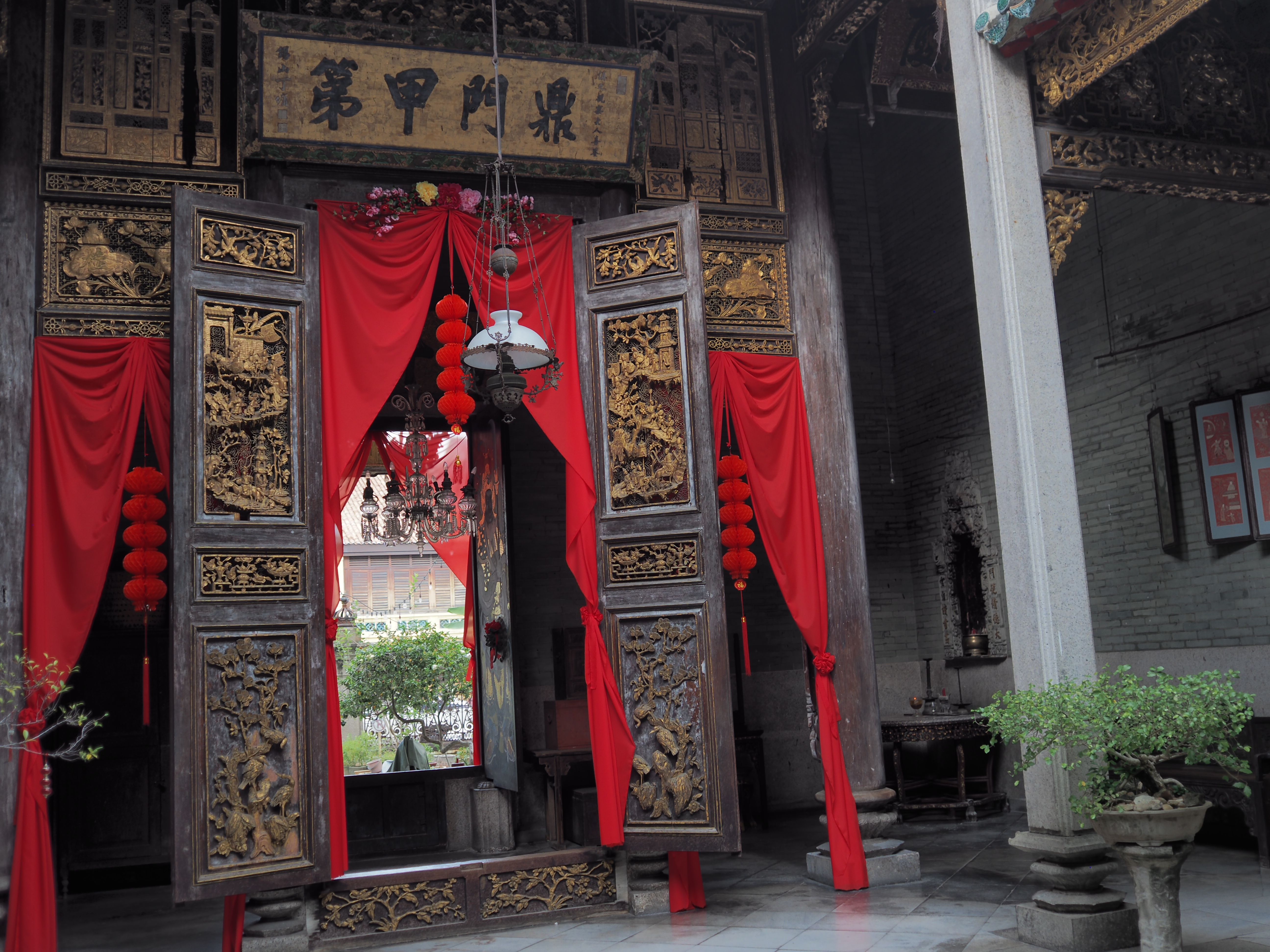
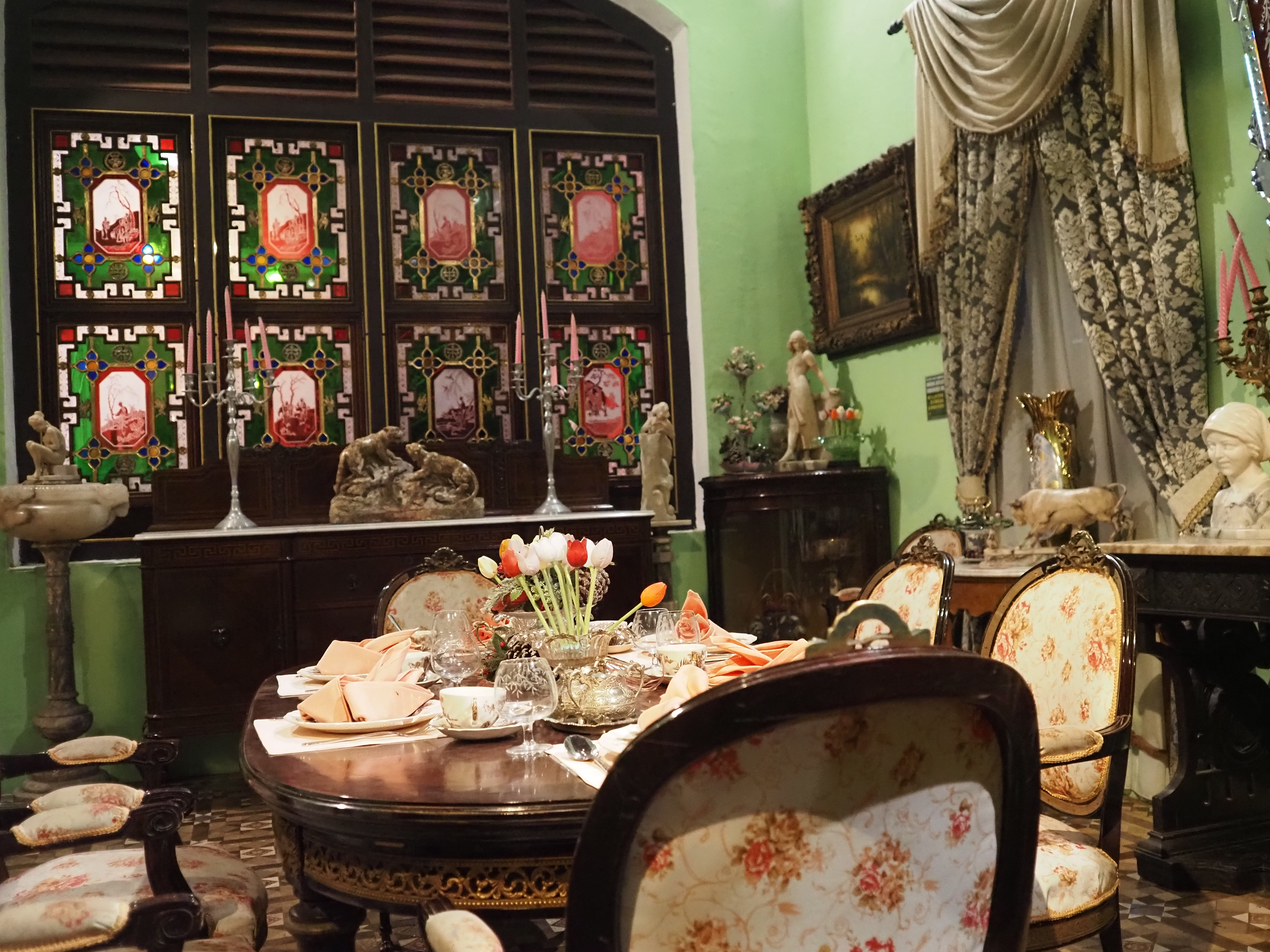
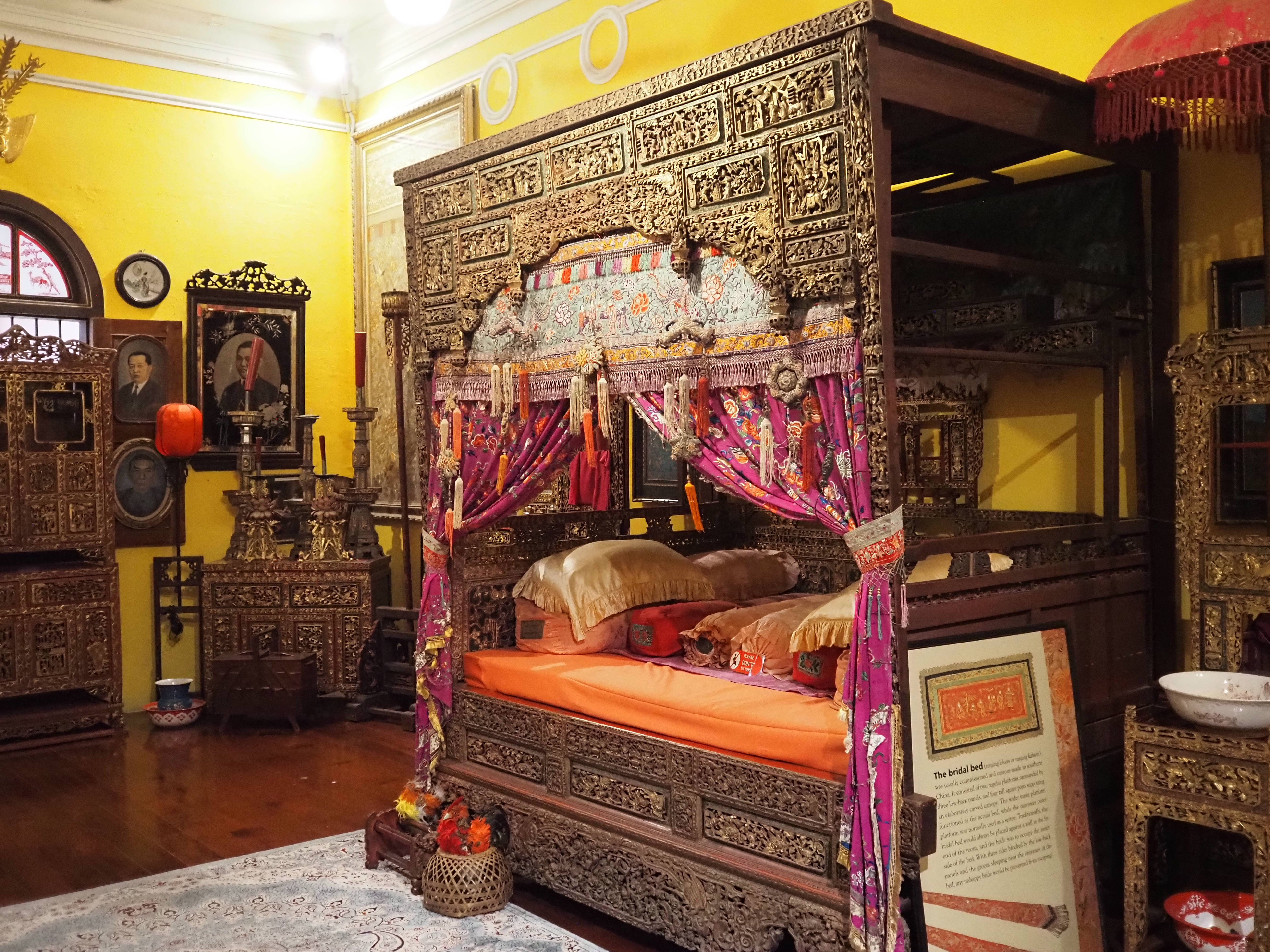
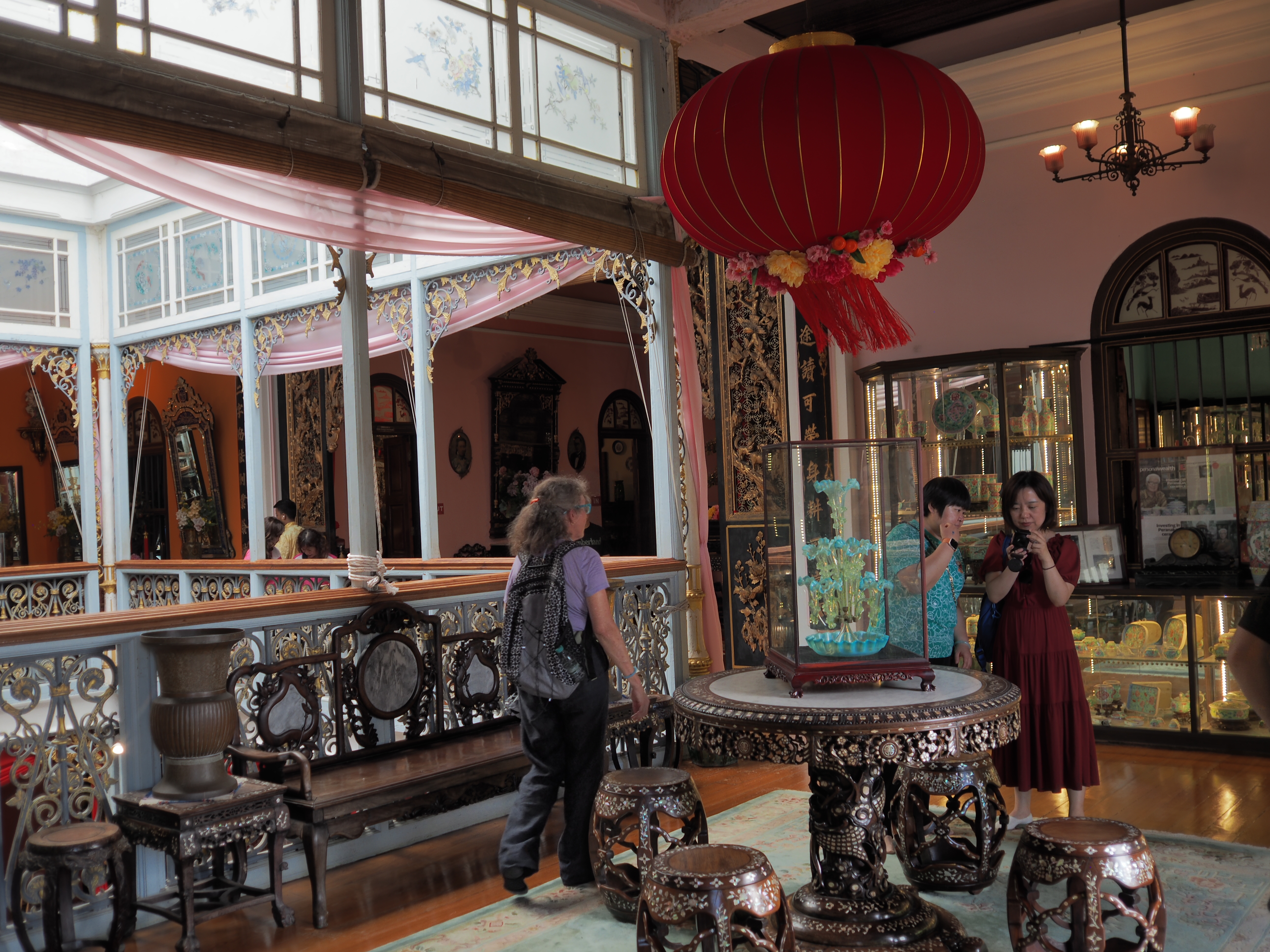
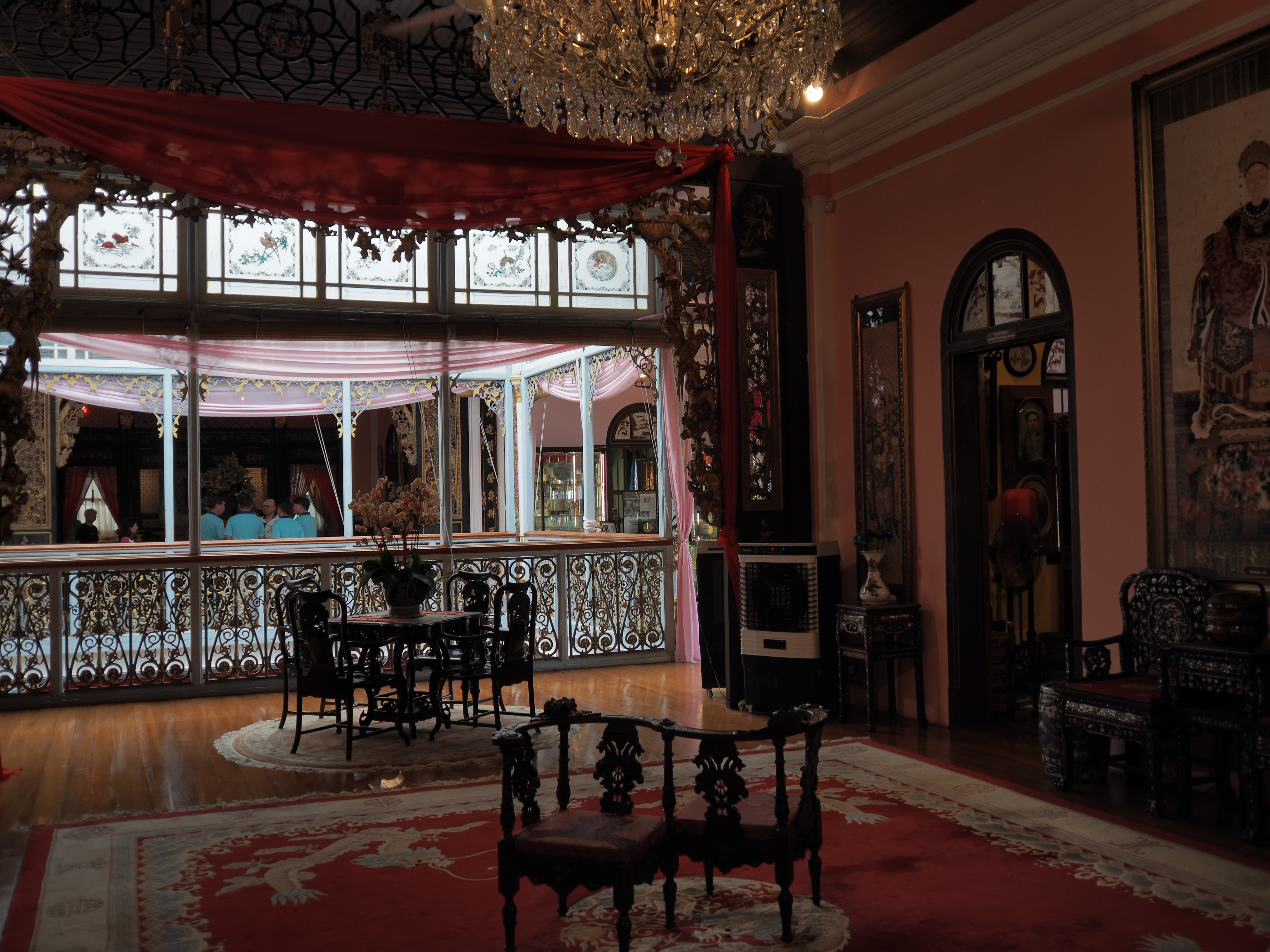
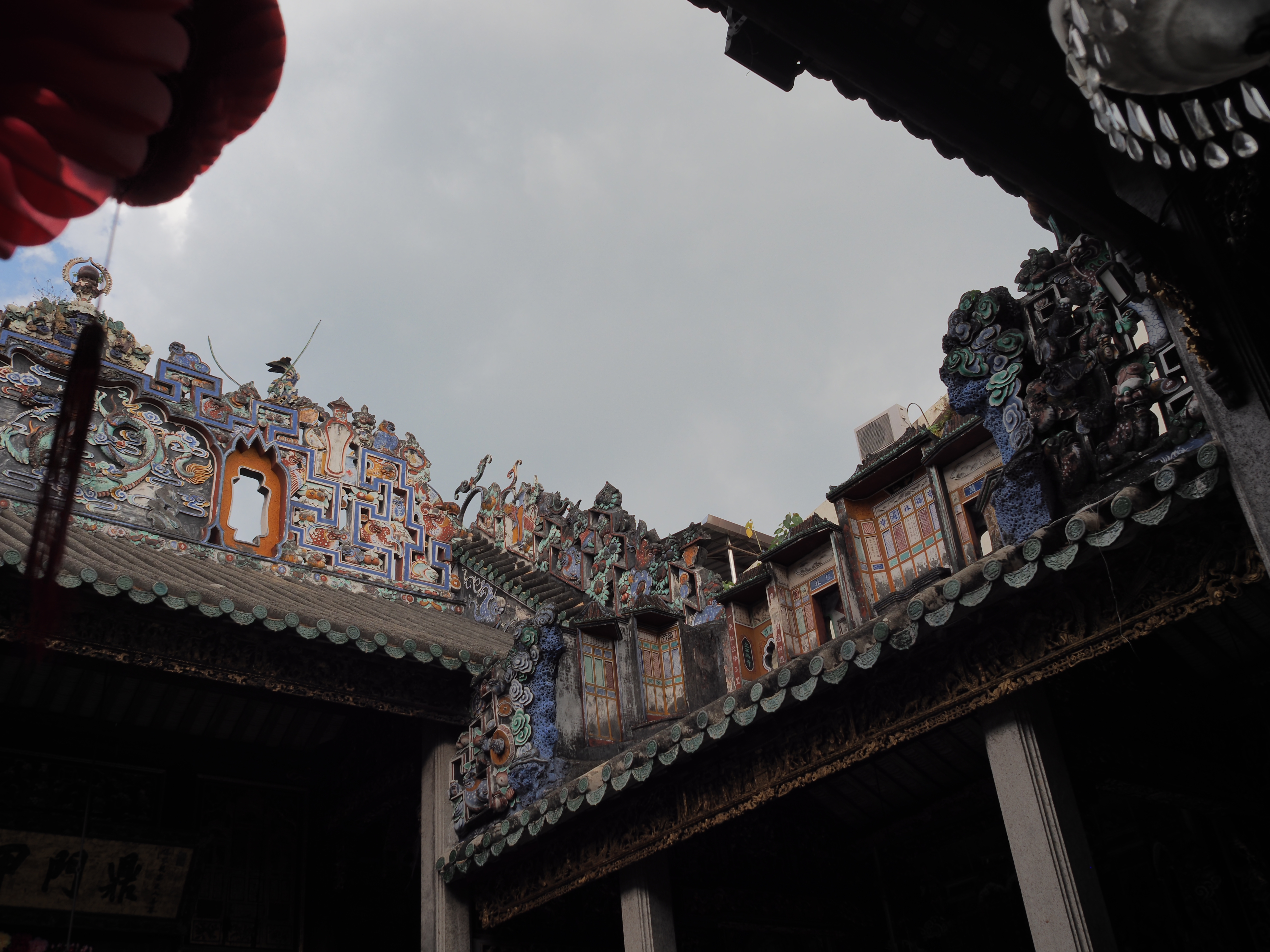
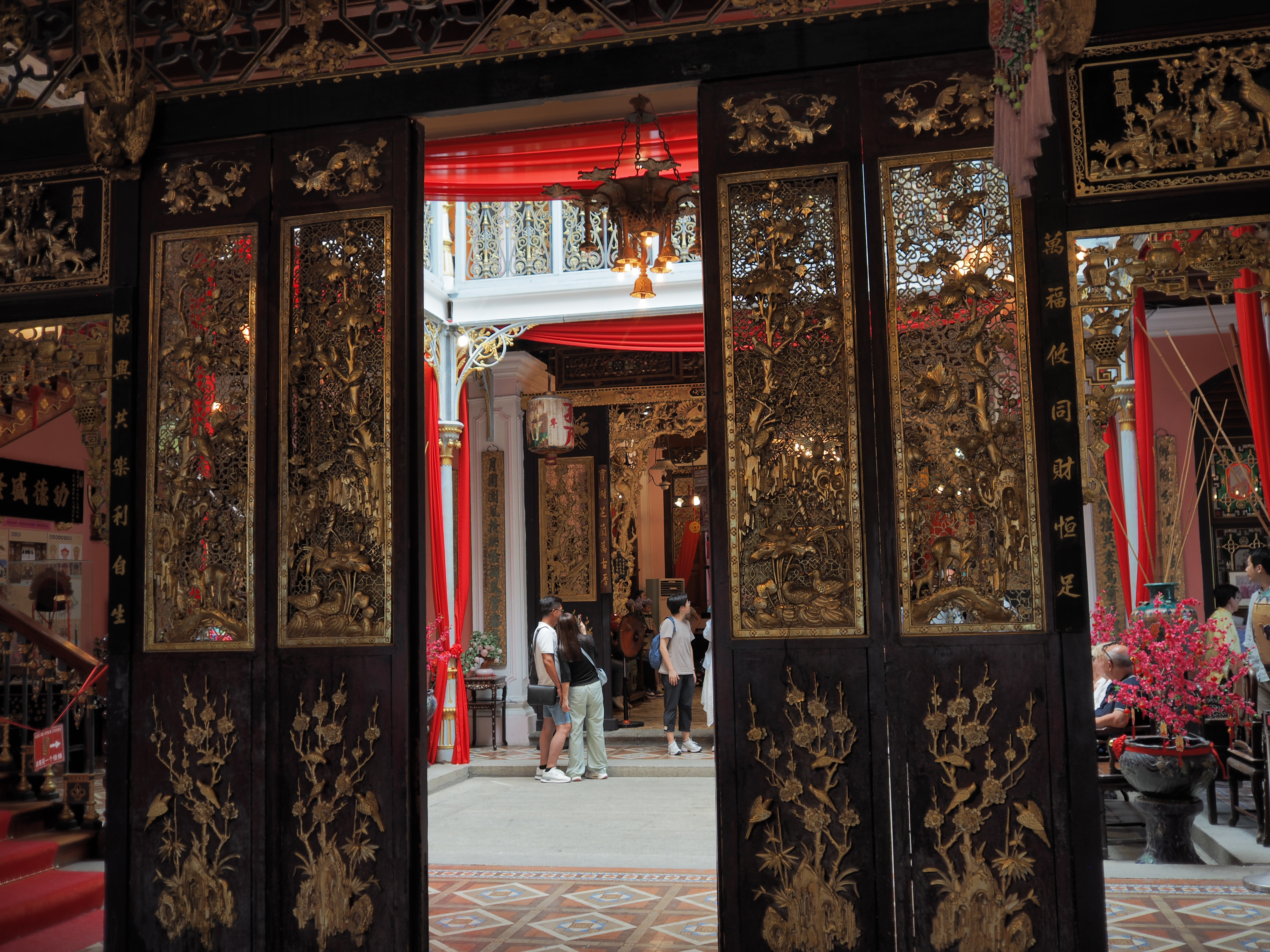
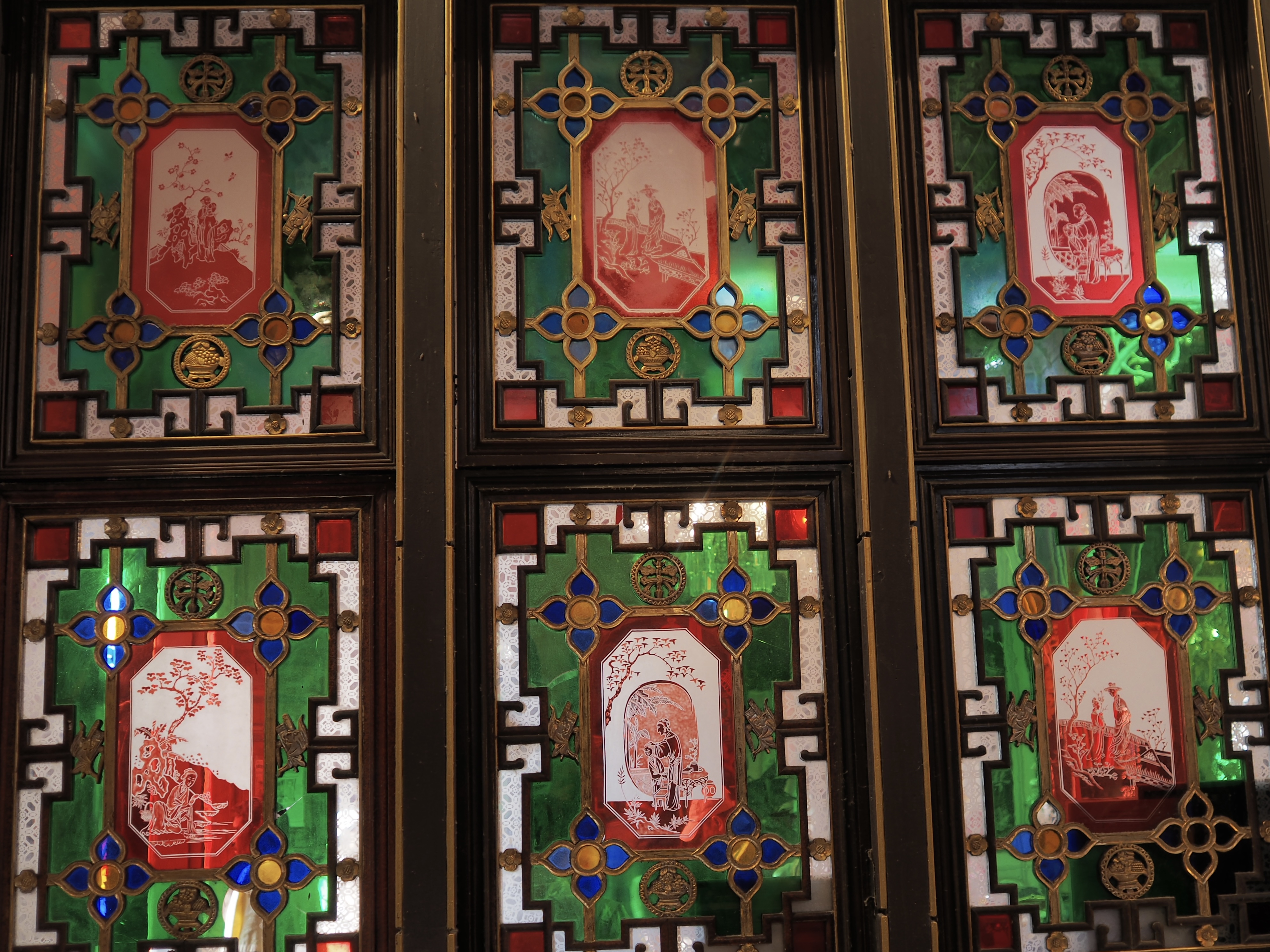
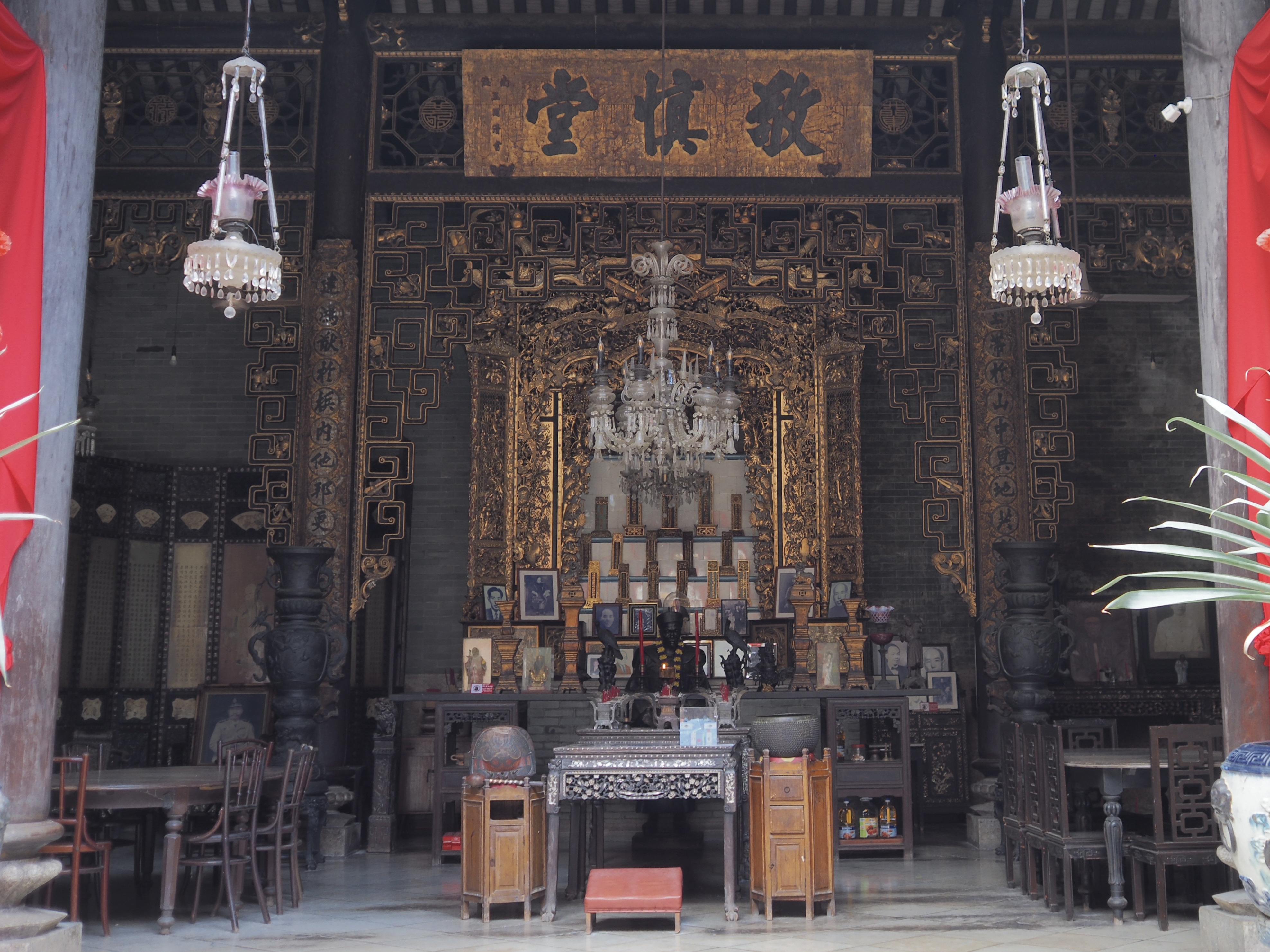
As with the Baba and Nyonya Heritage Museum in Melaka, the Pinang Peranakan Museum celebrates Peranakan culture, although the gentleman whose home was turned into the museum was a Chinese who arrived in Malaysia too late to qualify. Having been careful to eat sparingly, we met our food tour guide outside in the courtyard.
Food, Of Course

And, we were off to make our way through Chinatown and Little India, conveniently across the road from each other.
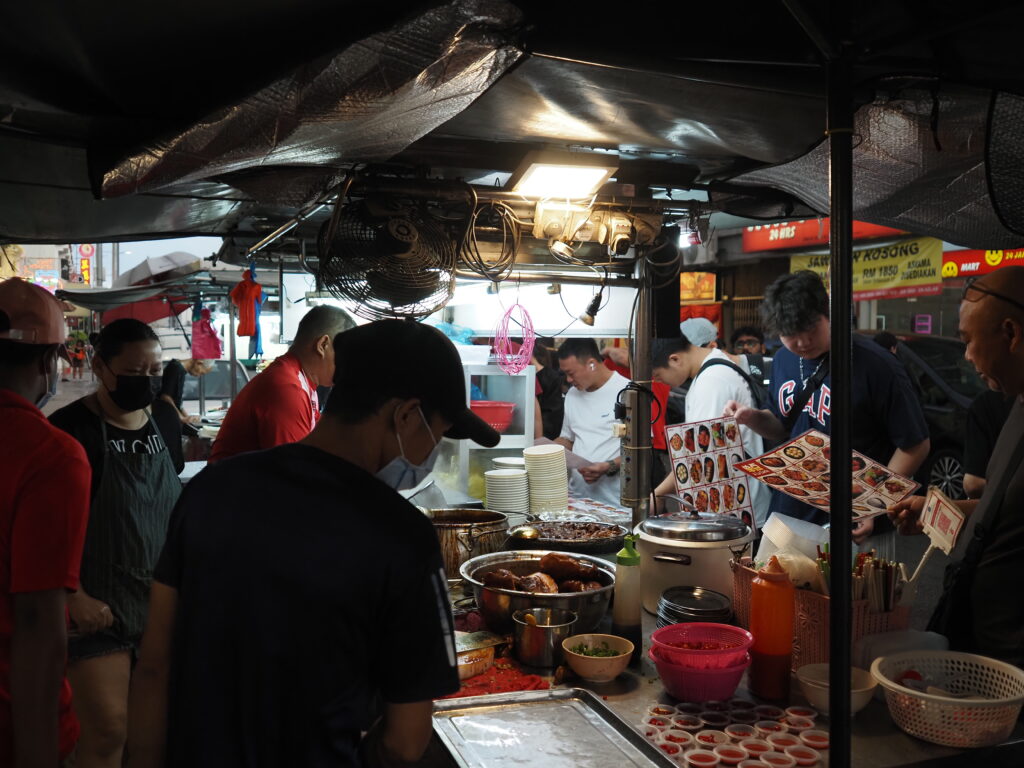
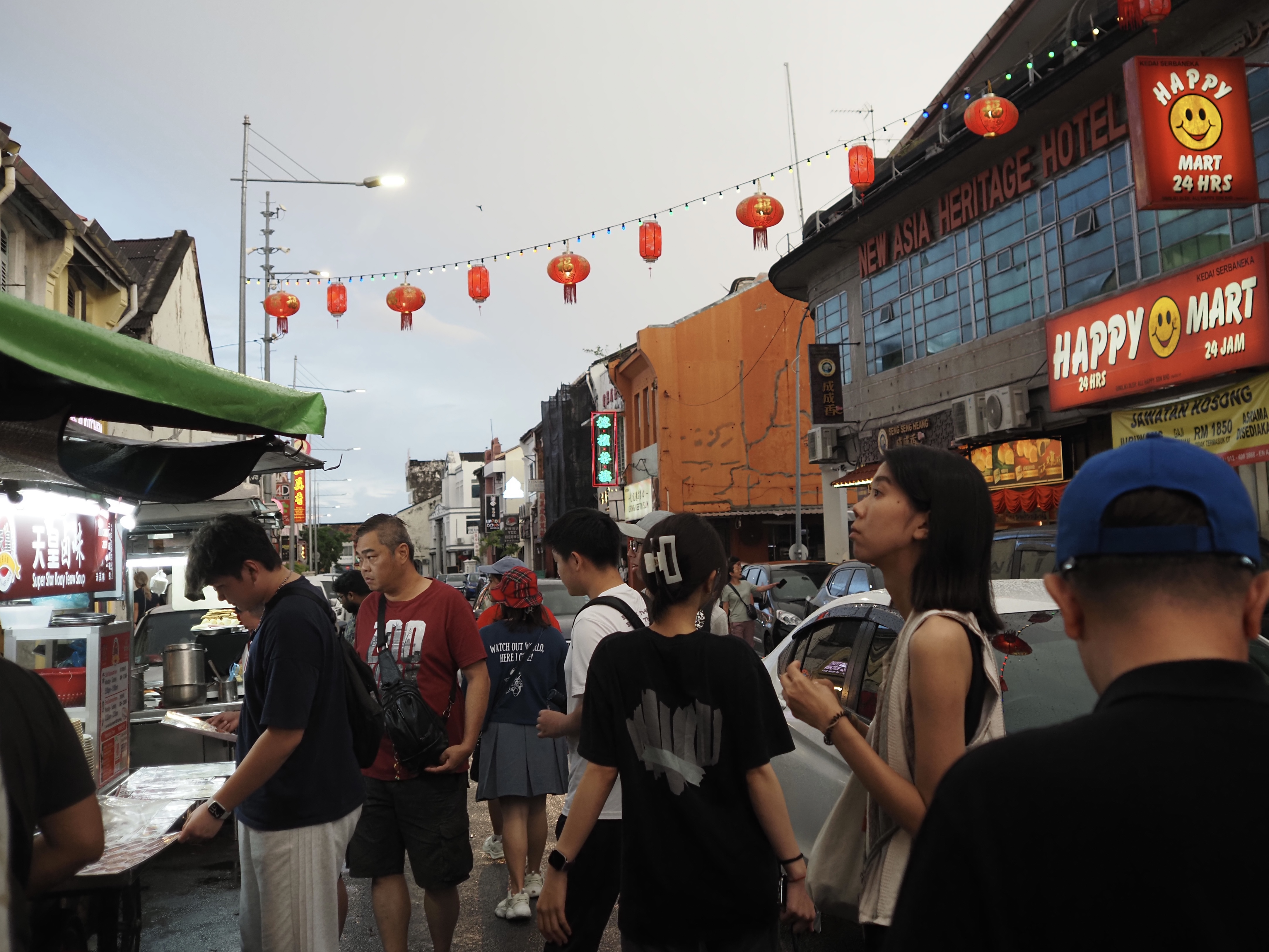

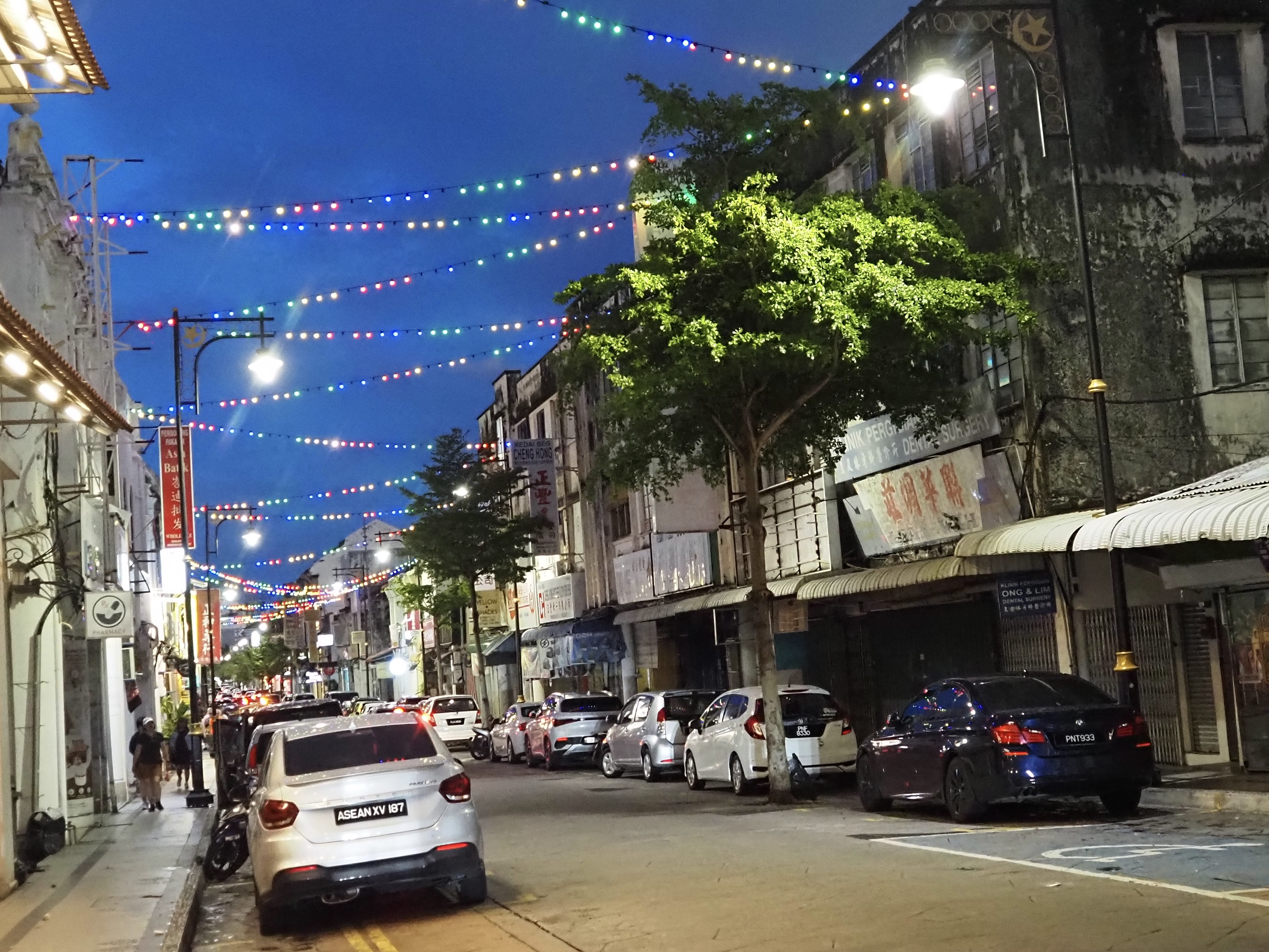
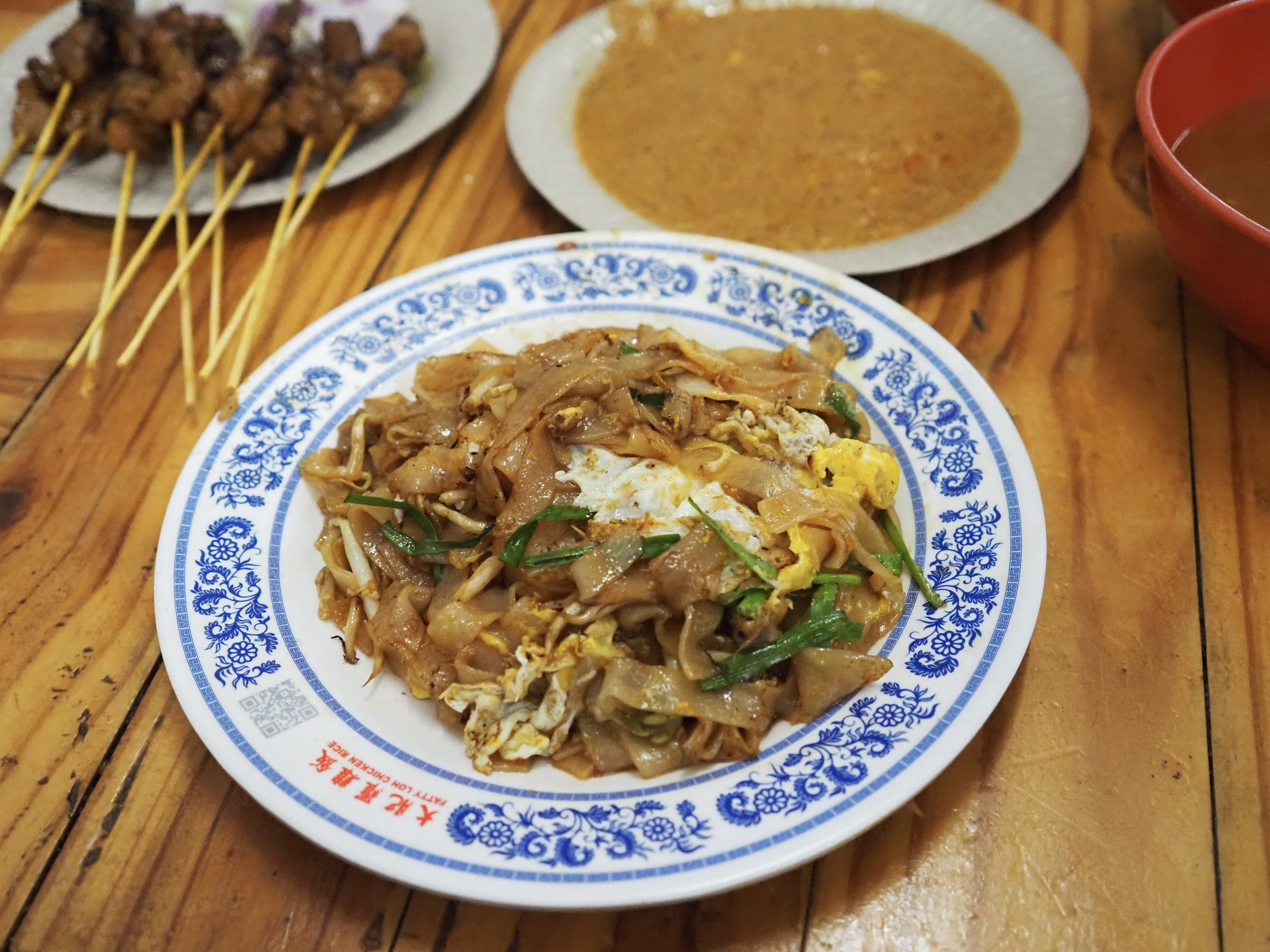
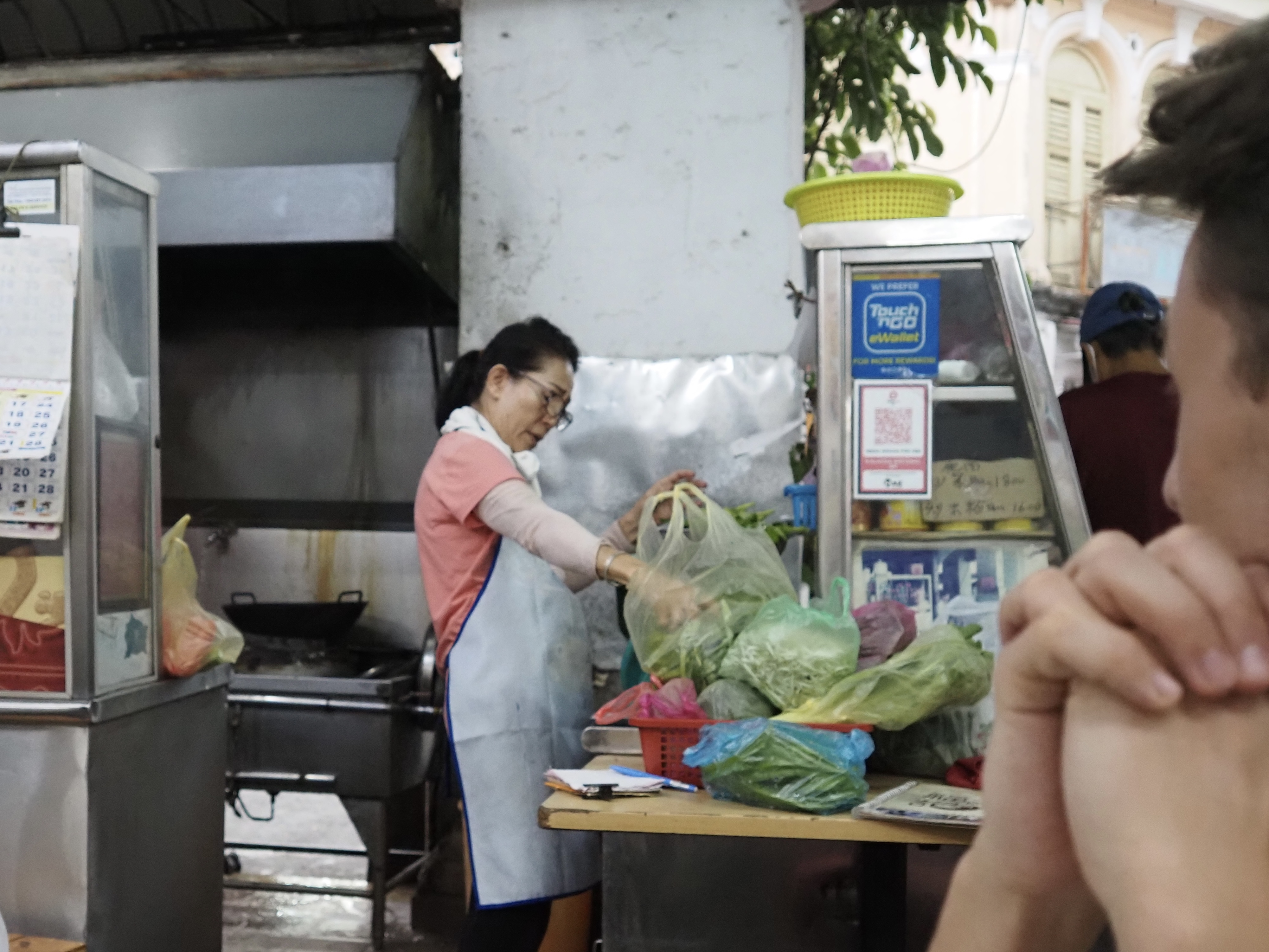
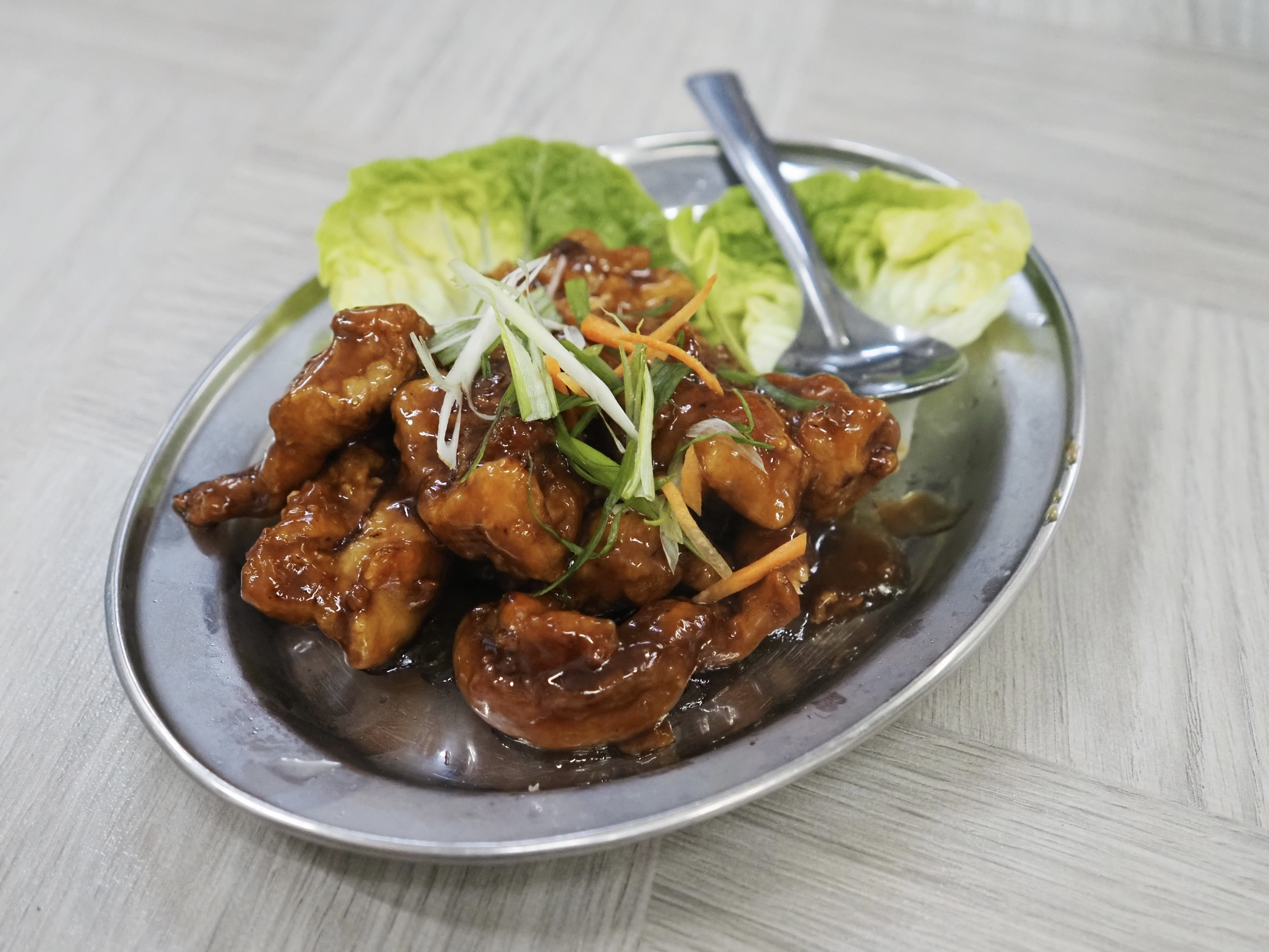
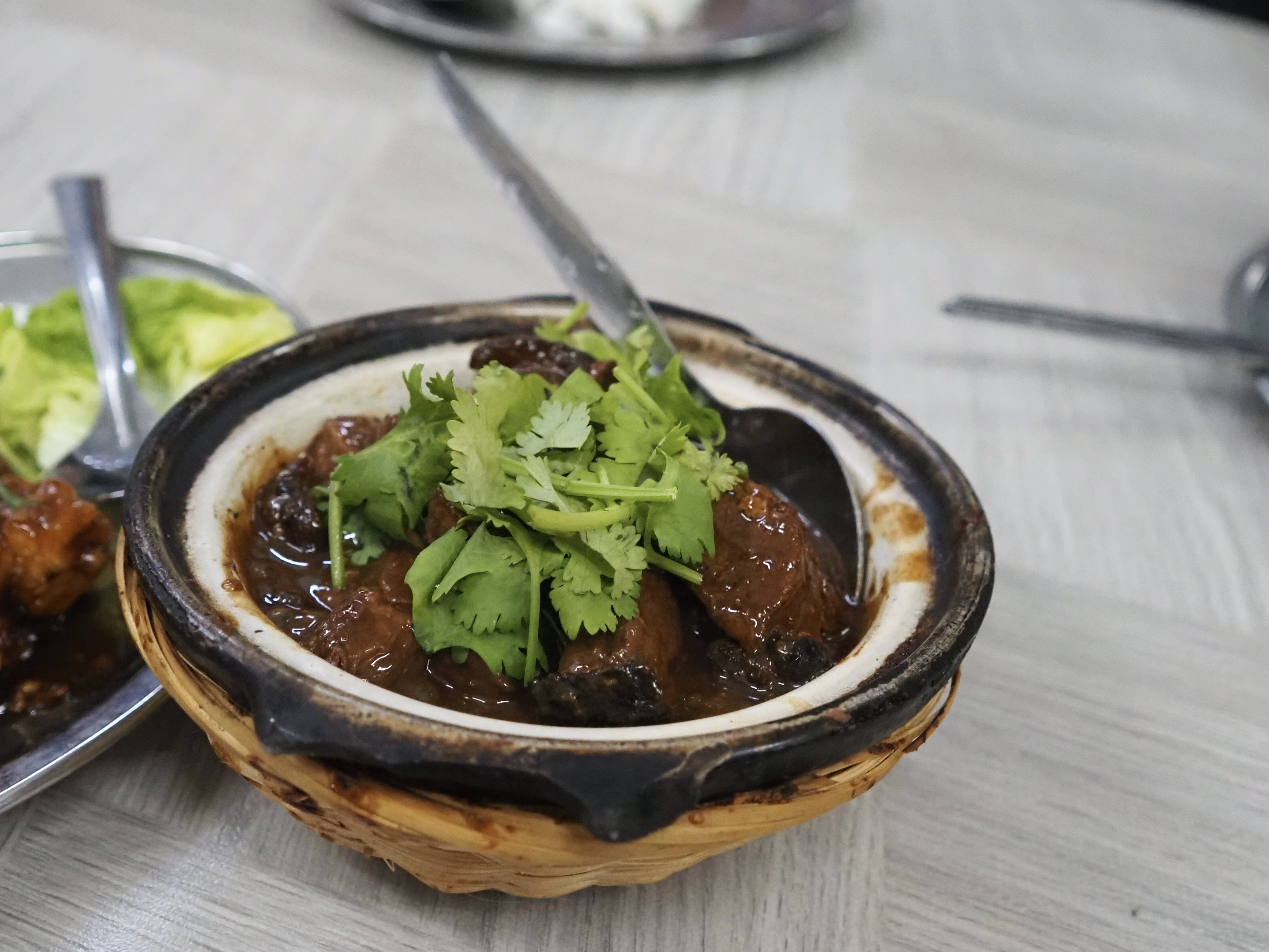
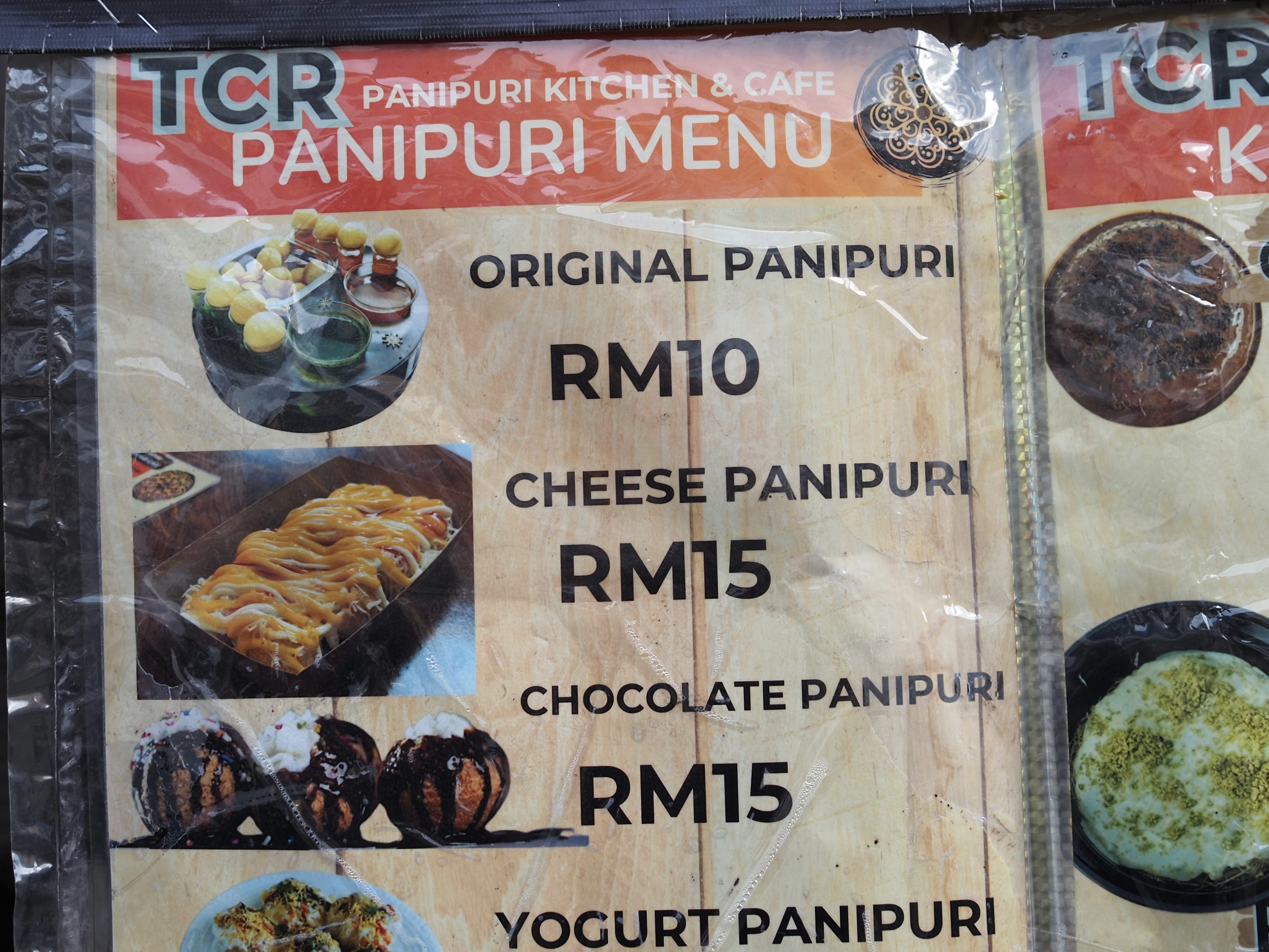
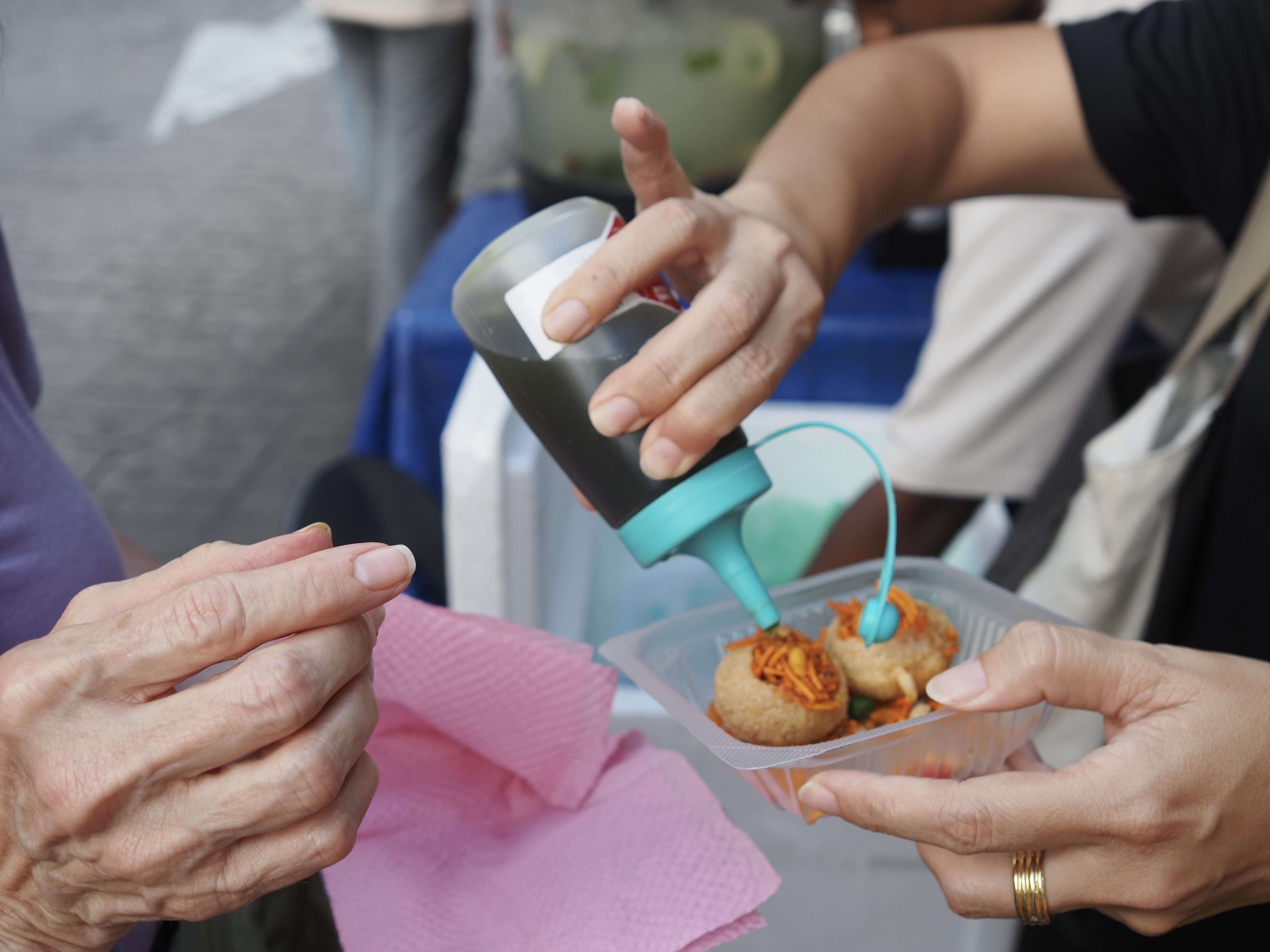
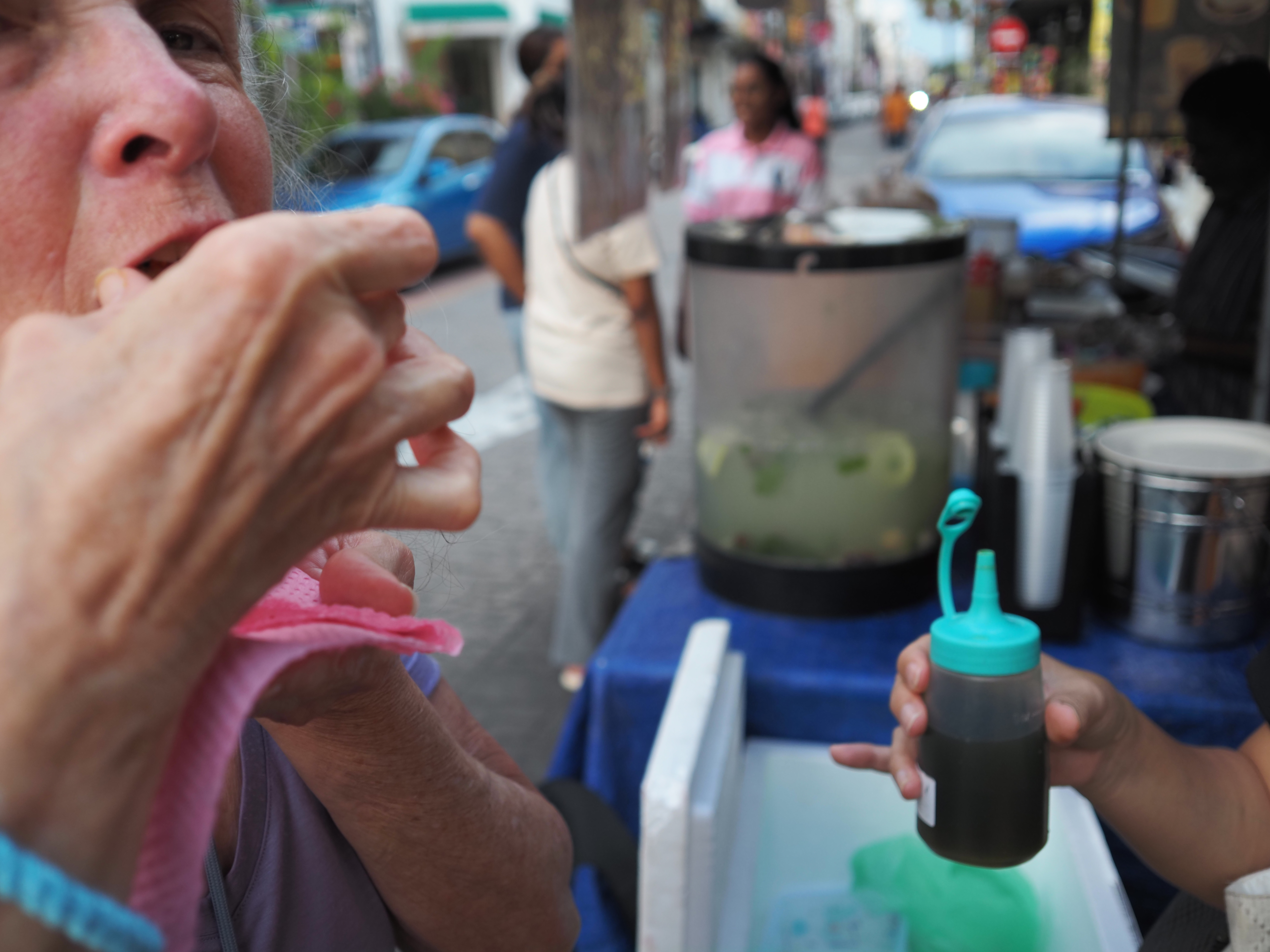
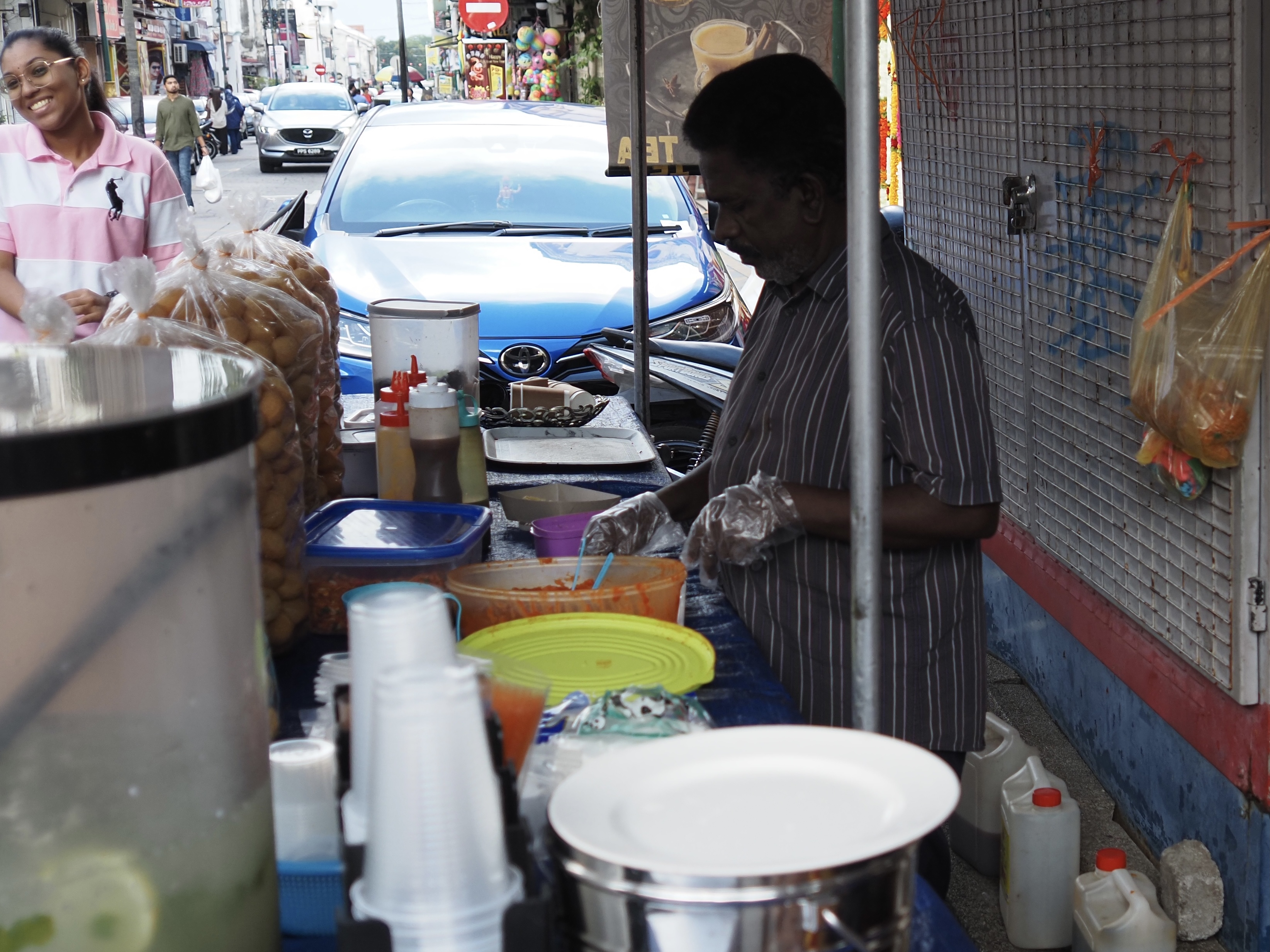
One of our favorite street foods is panipuri, first encountered by us in India. A fried shell is filled with potato, chick peas and other good crunchy stuff, a full flavored vinegary liquid is added and you open real wide to pop it in whole. It has to be experienced.
A Firefighter Museum
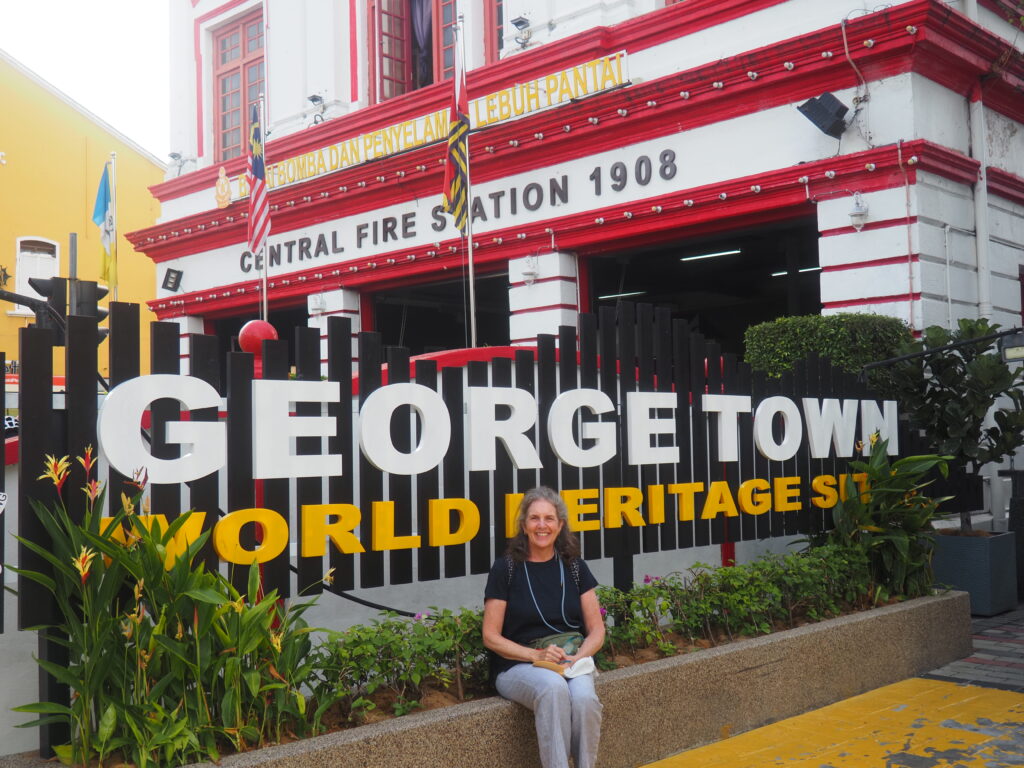




The firefighting bicycle and motorcycle were a revelation. The outside of the station on the other side of the building was completely covered with scenes of past rescues told in vivid wall murals. This is, after all, an active fire station.
On the Street
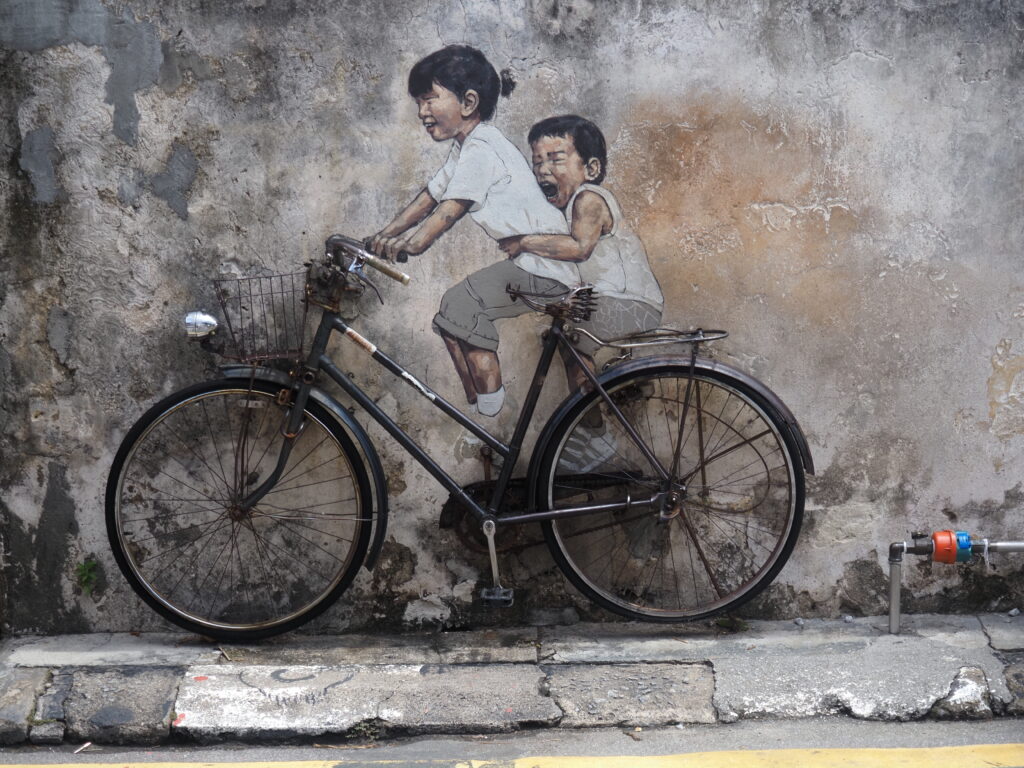
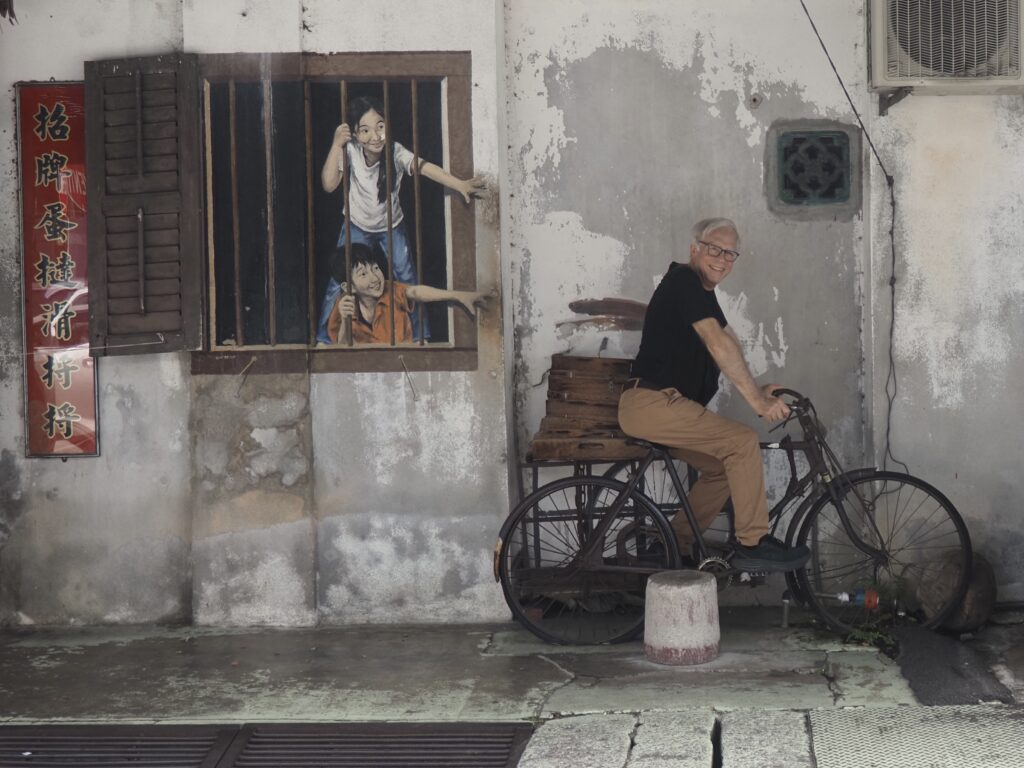
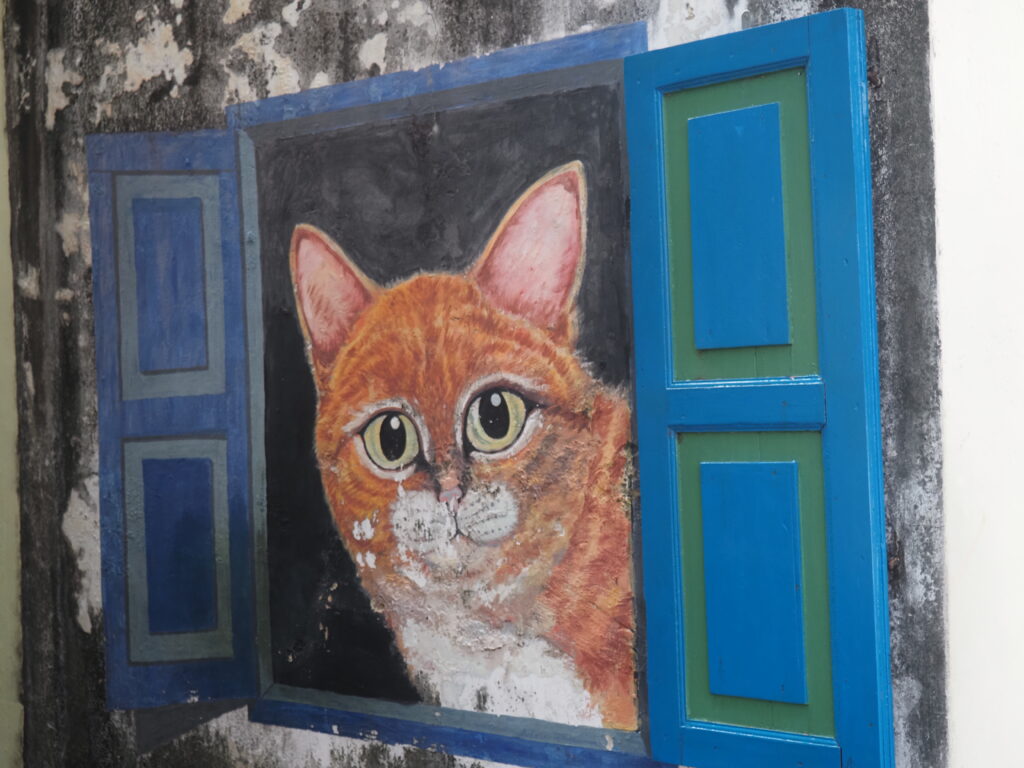
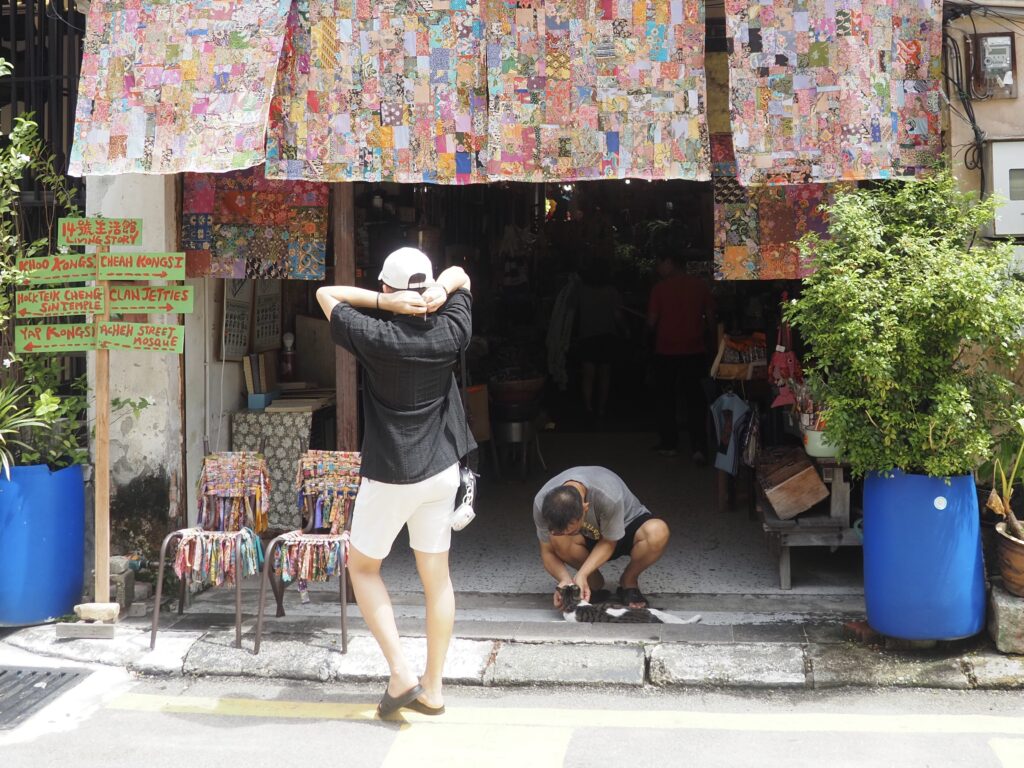











In addition to the street art, the streets of George Town are full of shop houses, typically two stories with an overhanging second story that provides a five foot covered walkway for pedestrians, shelter from both heat and torrential rain. Generally there would be some sort of retail in front and the family would live behind and above.
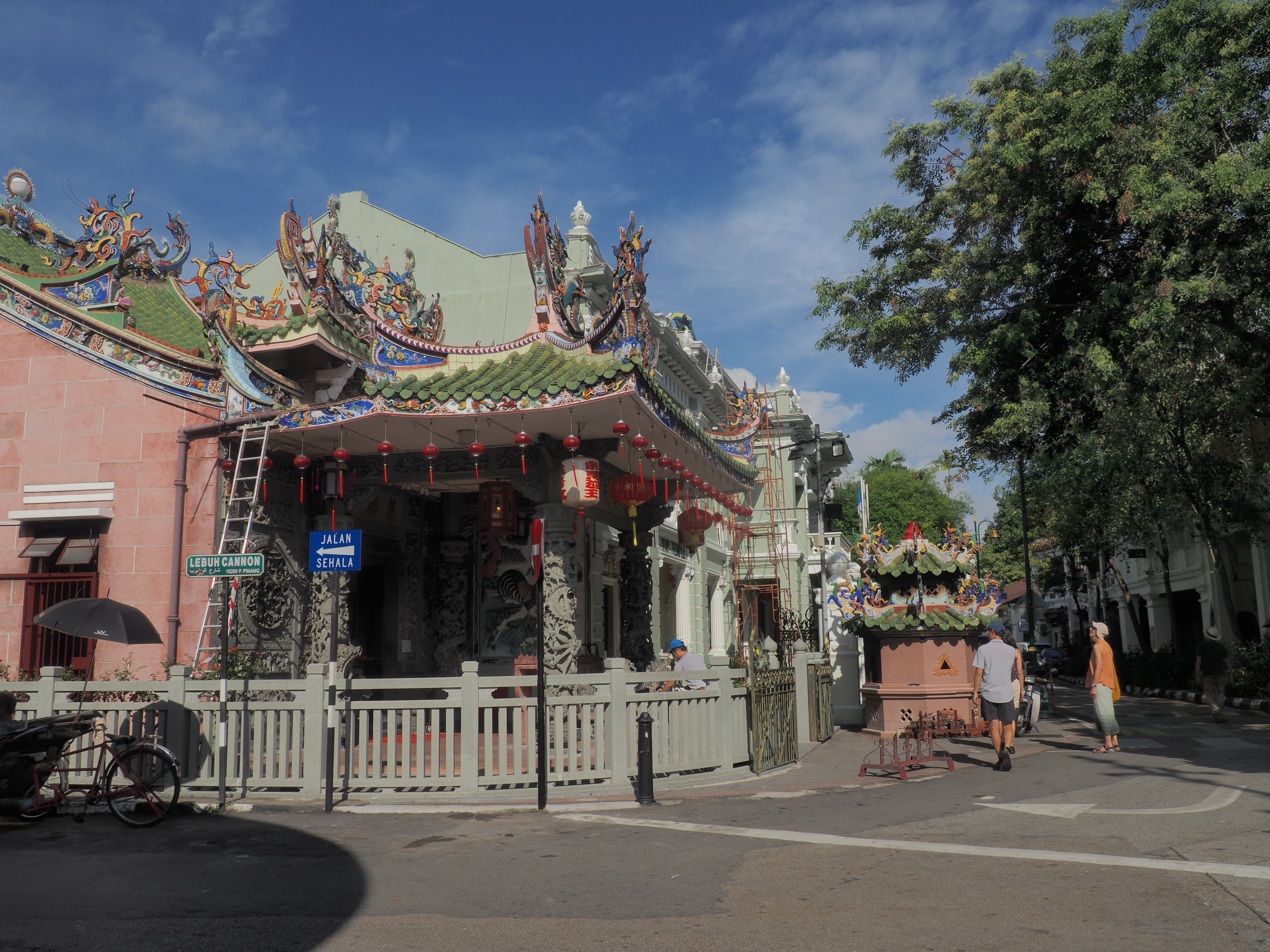
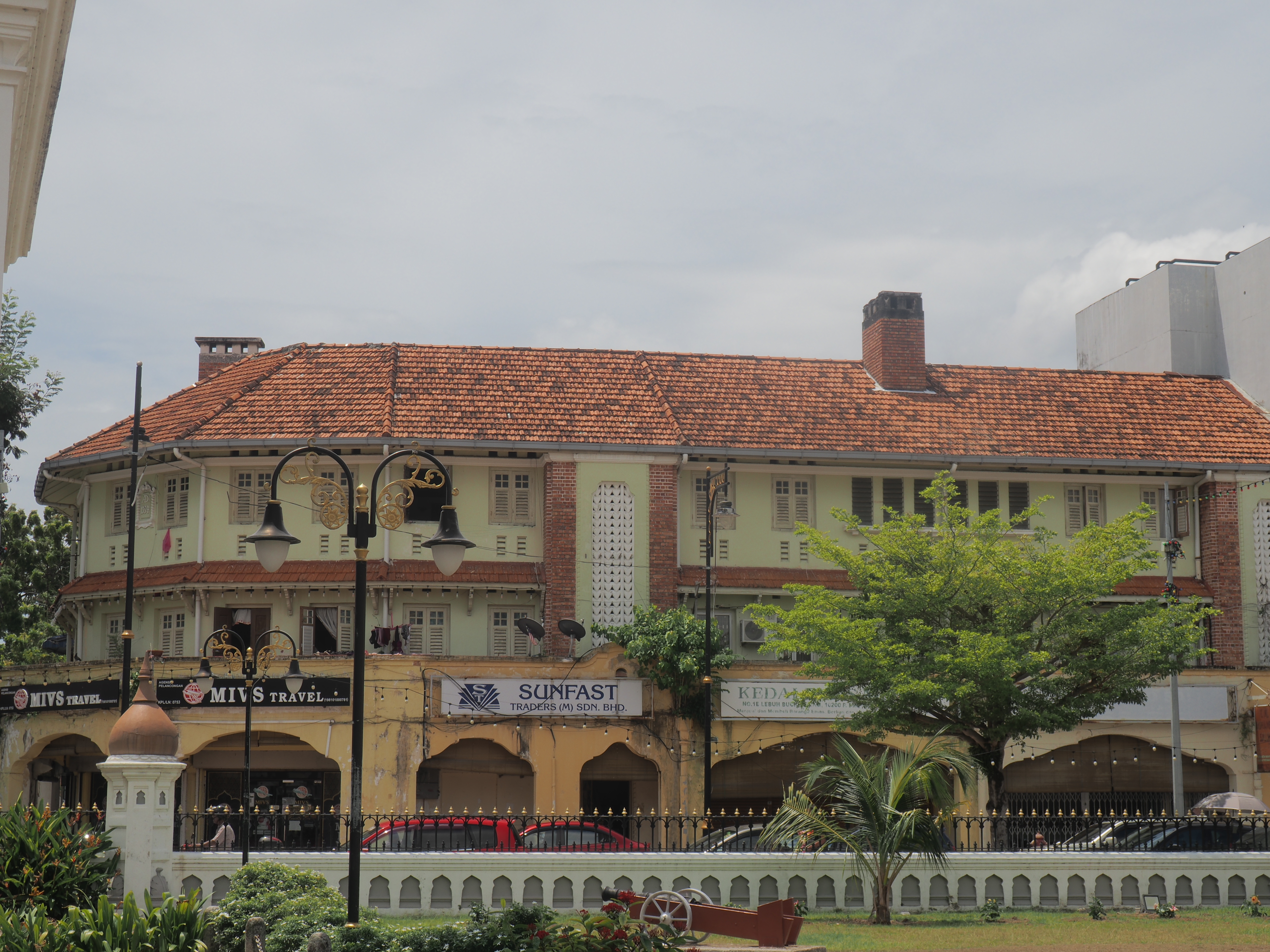
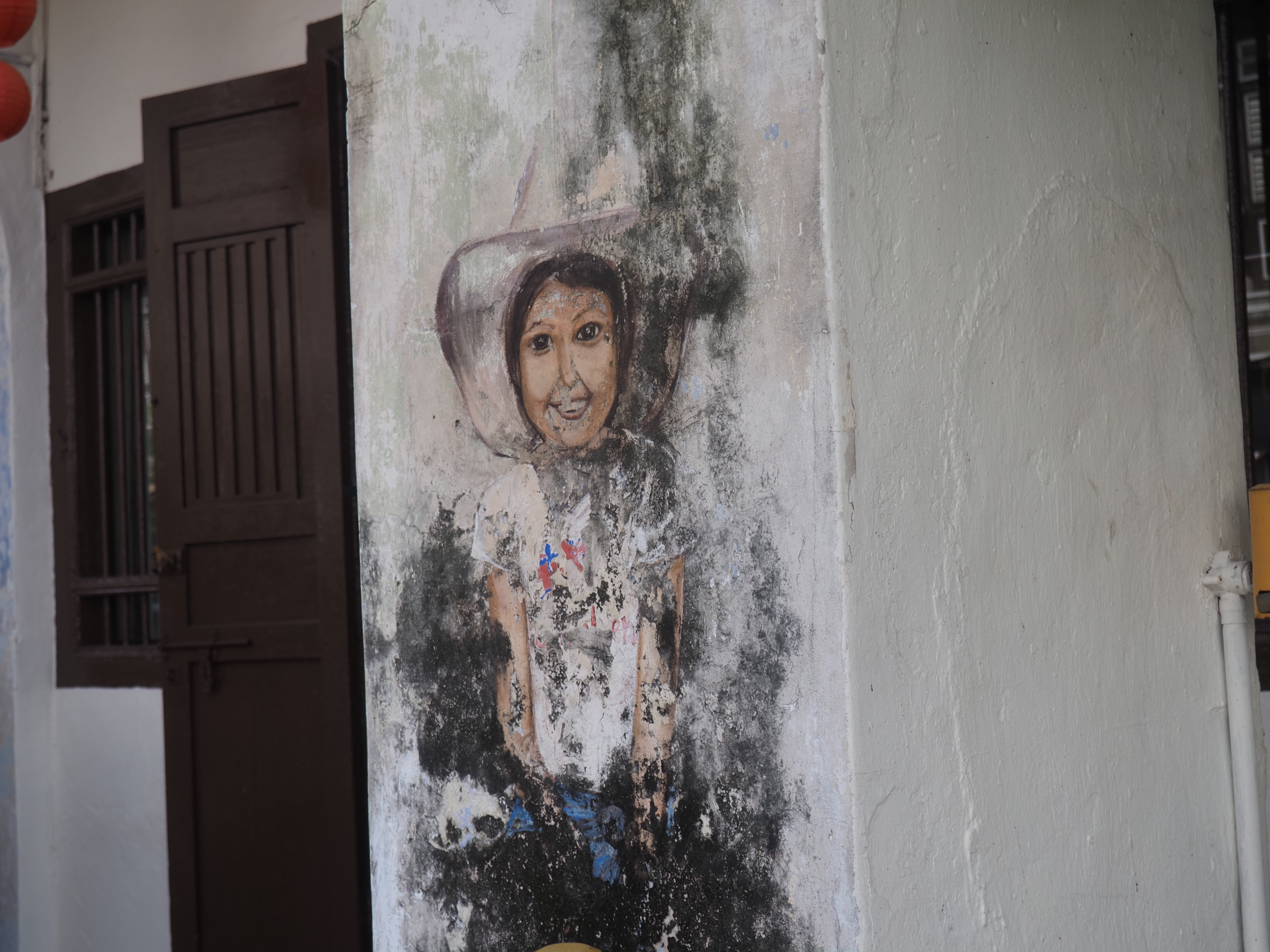
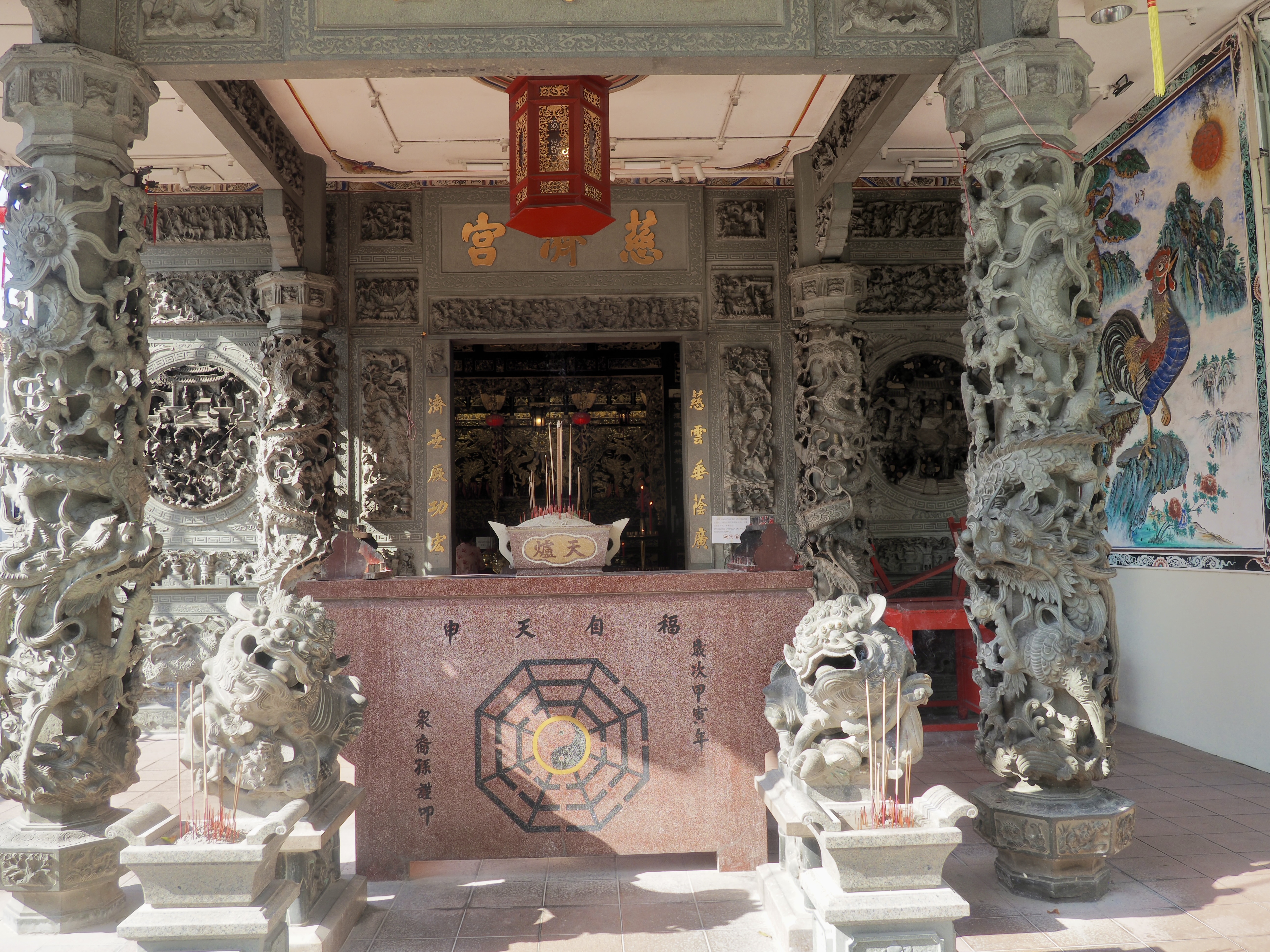
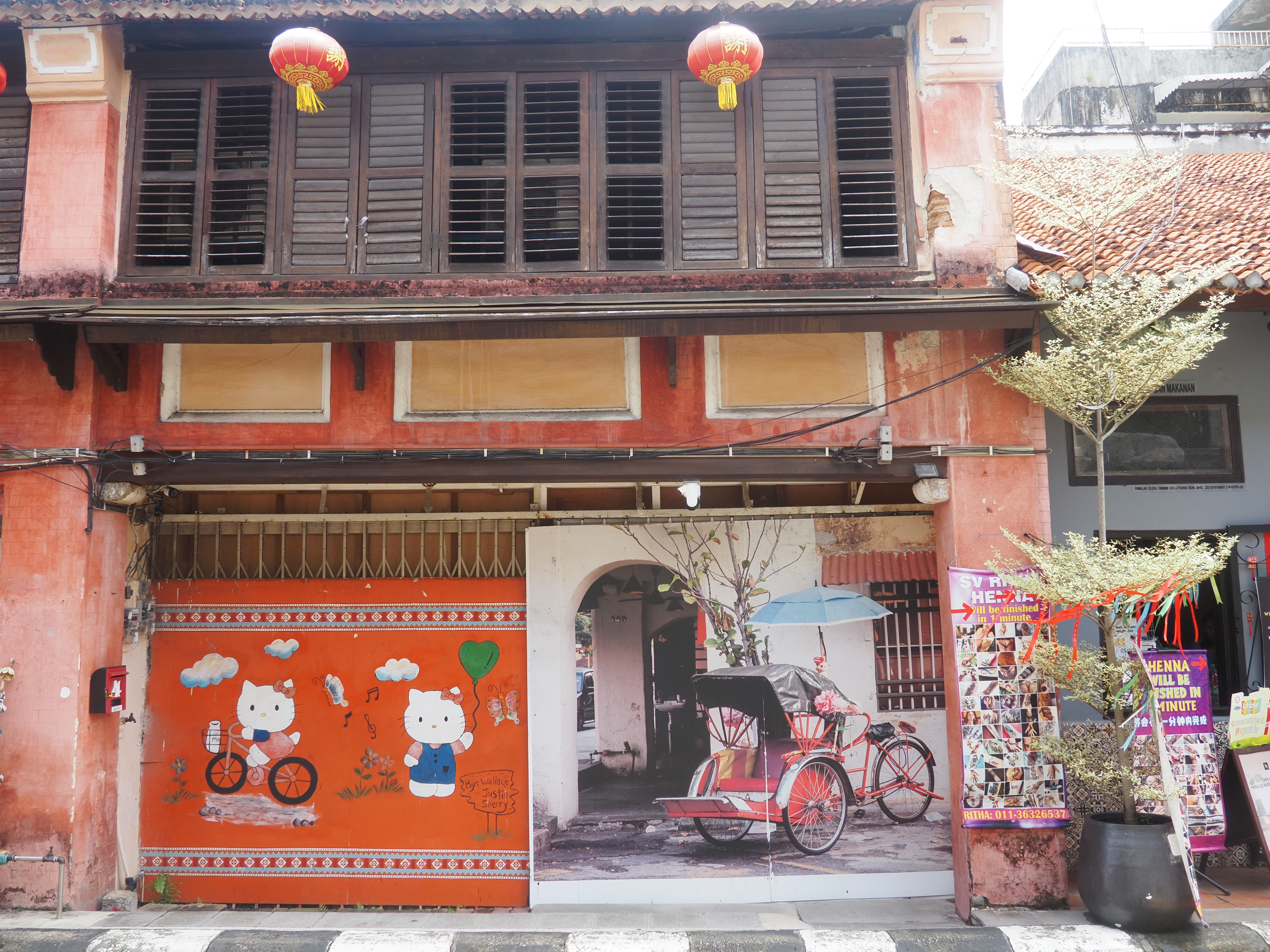
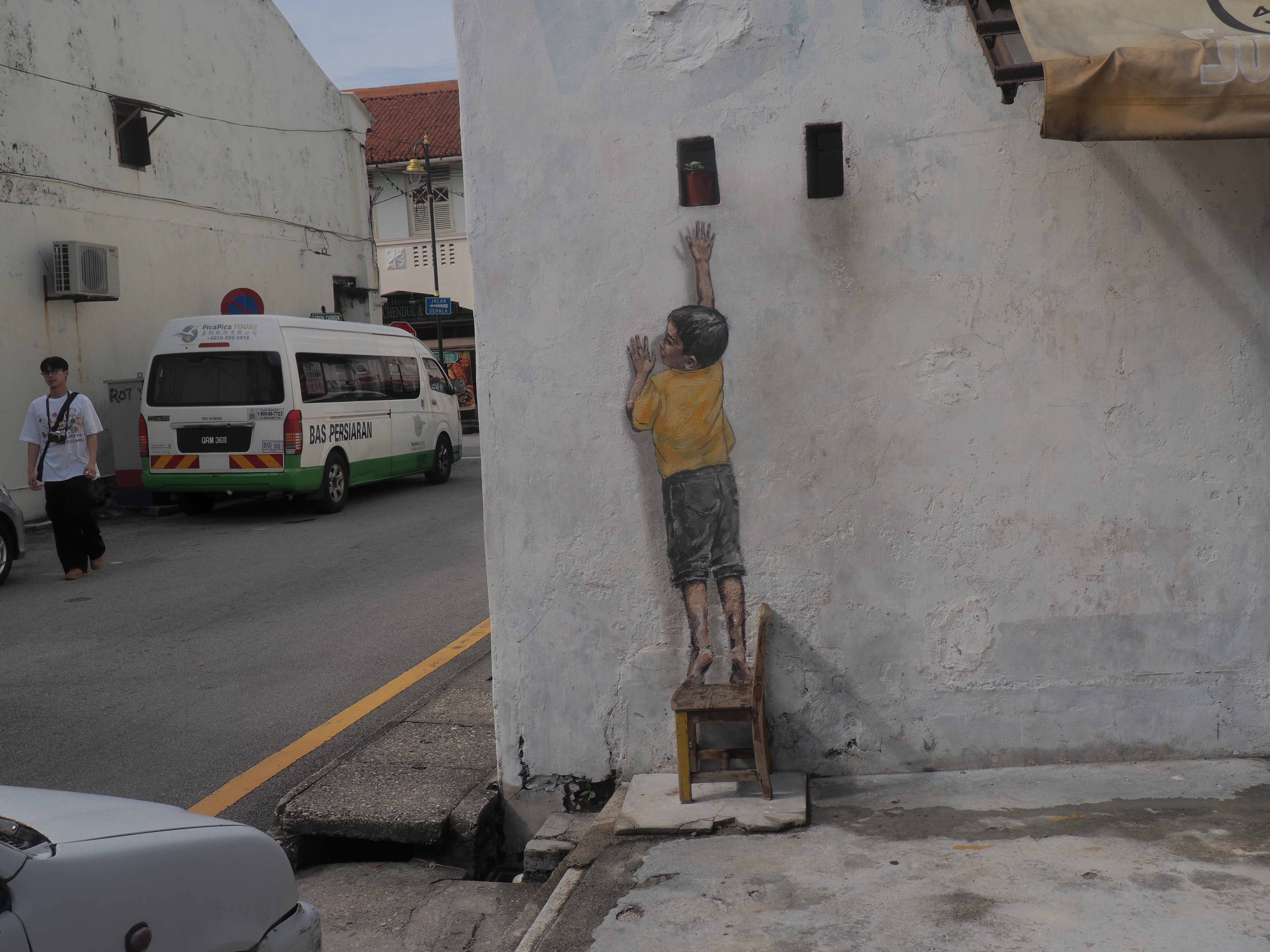
Khoo Kongsi
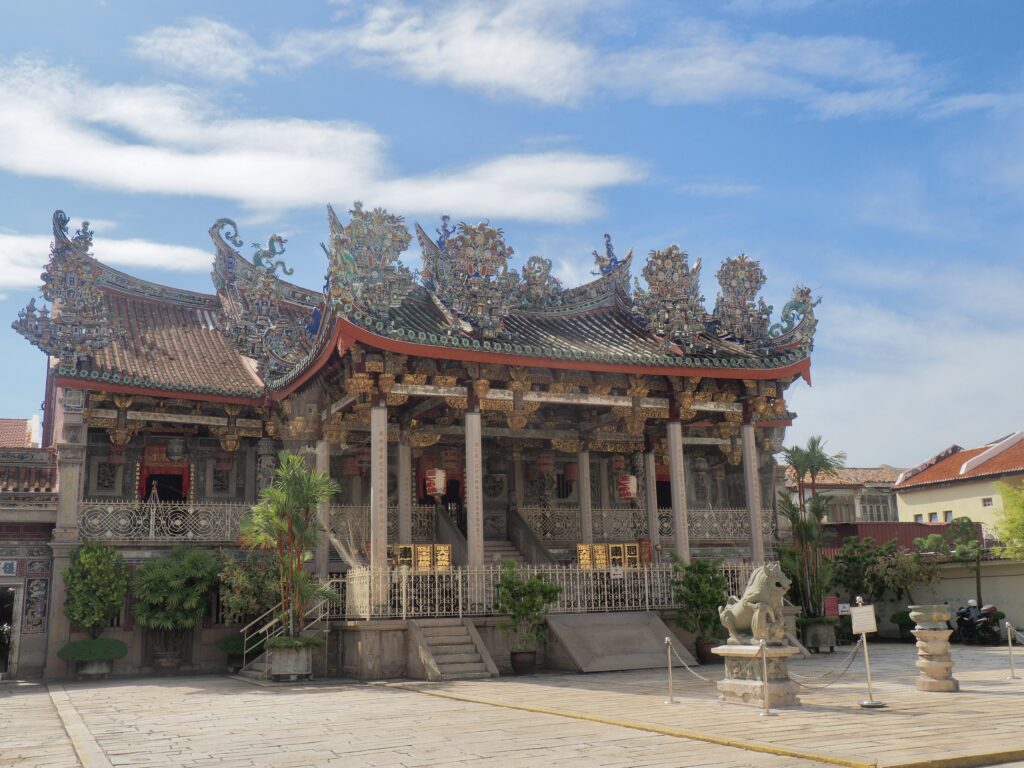
A kongsi is a Chinese clanhouse, established to provide a safe place for extended family in the immigrant community, including housing and employment. They were very powerful institutions and the British looked on them skeptically as secret societies.




An Opera stage stands across the courtyard from the Clanhouse.
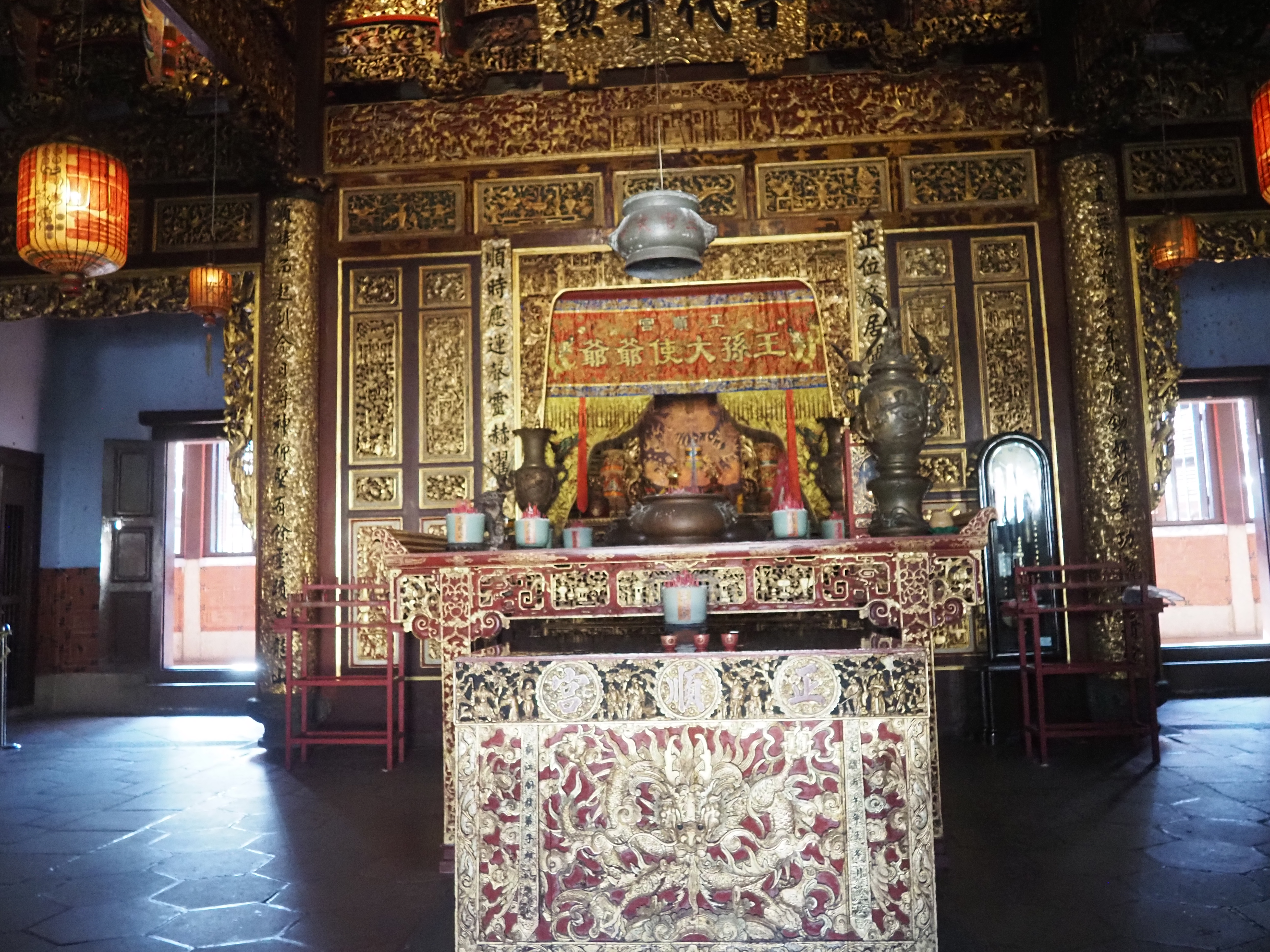
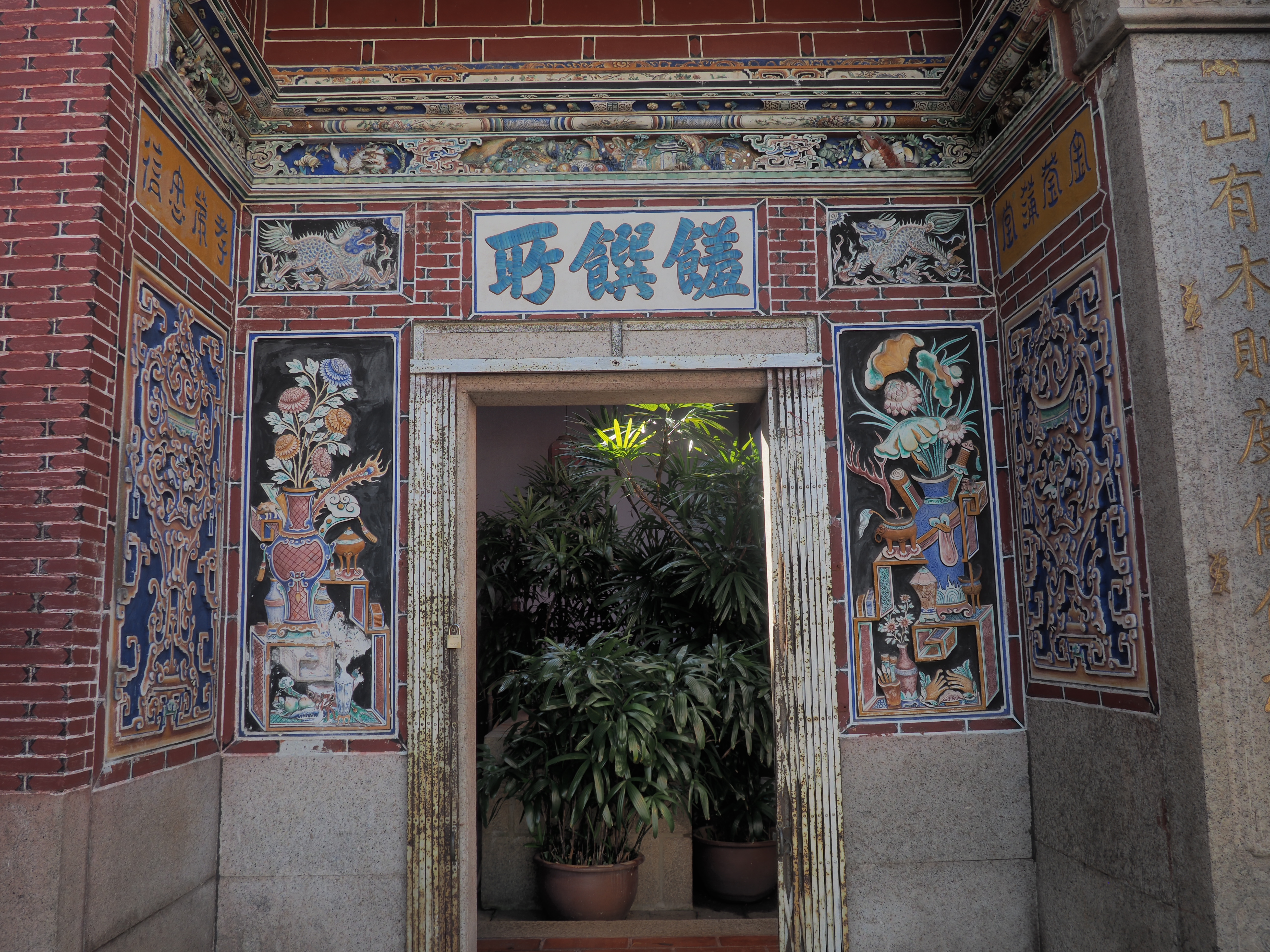
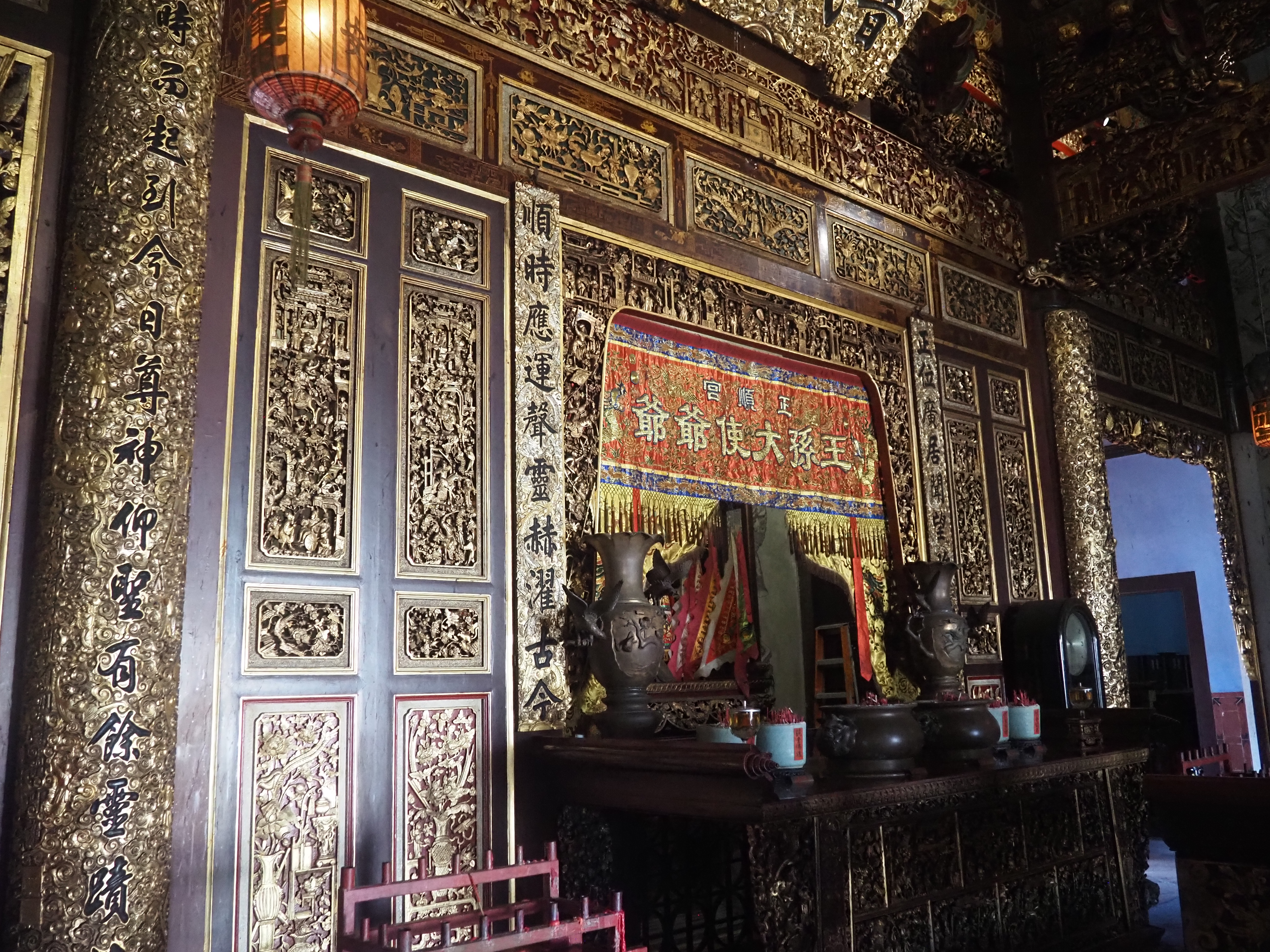
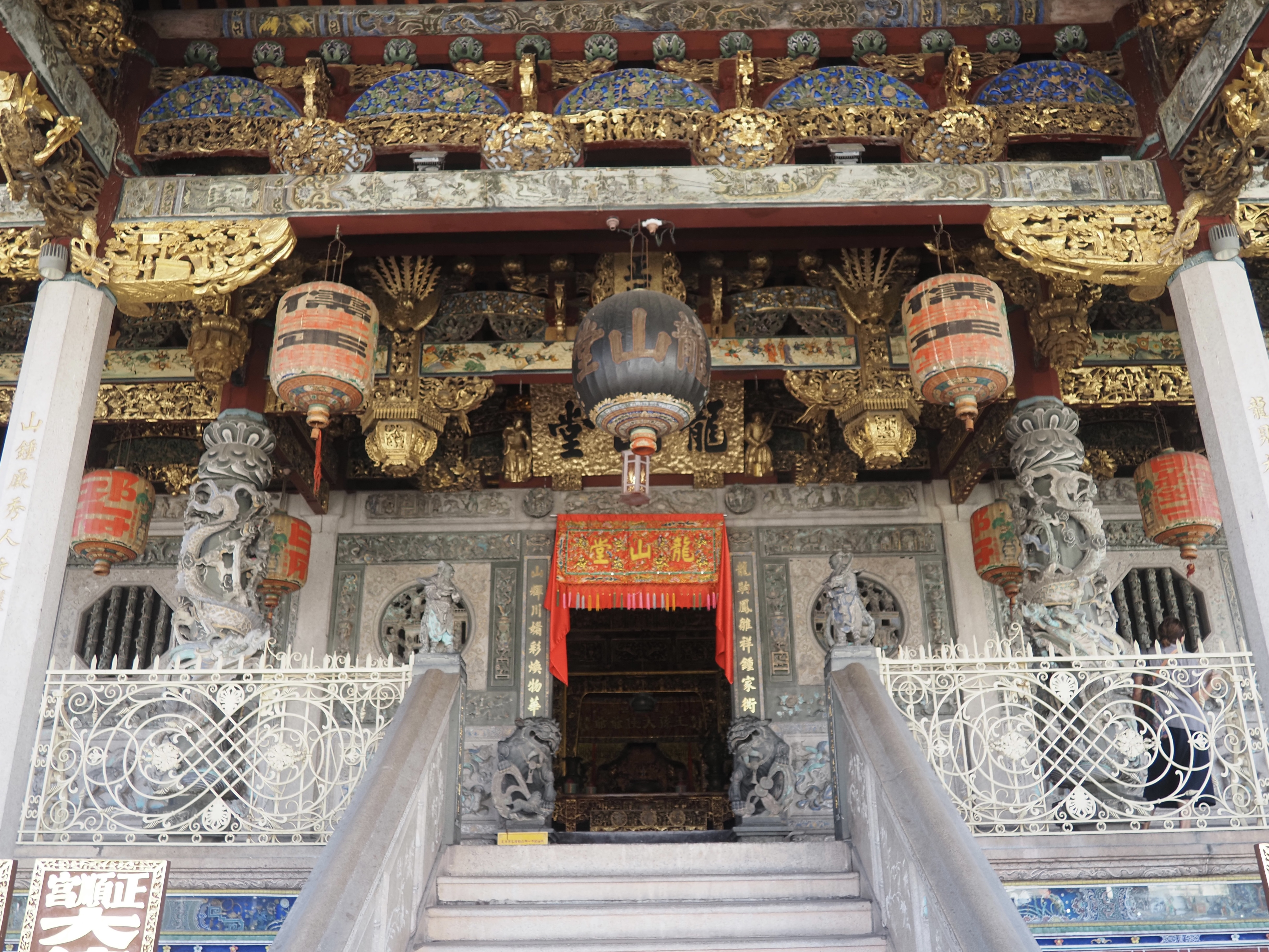
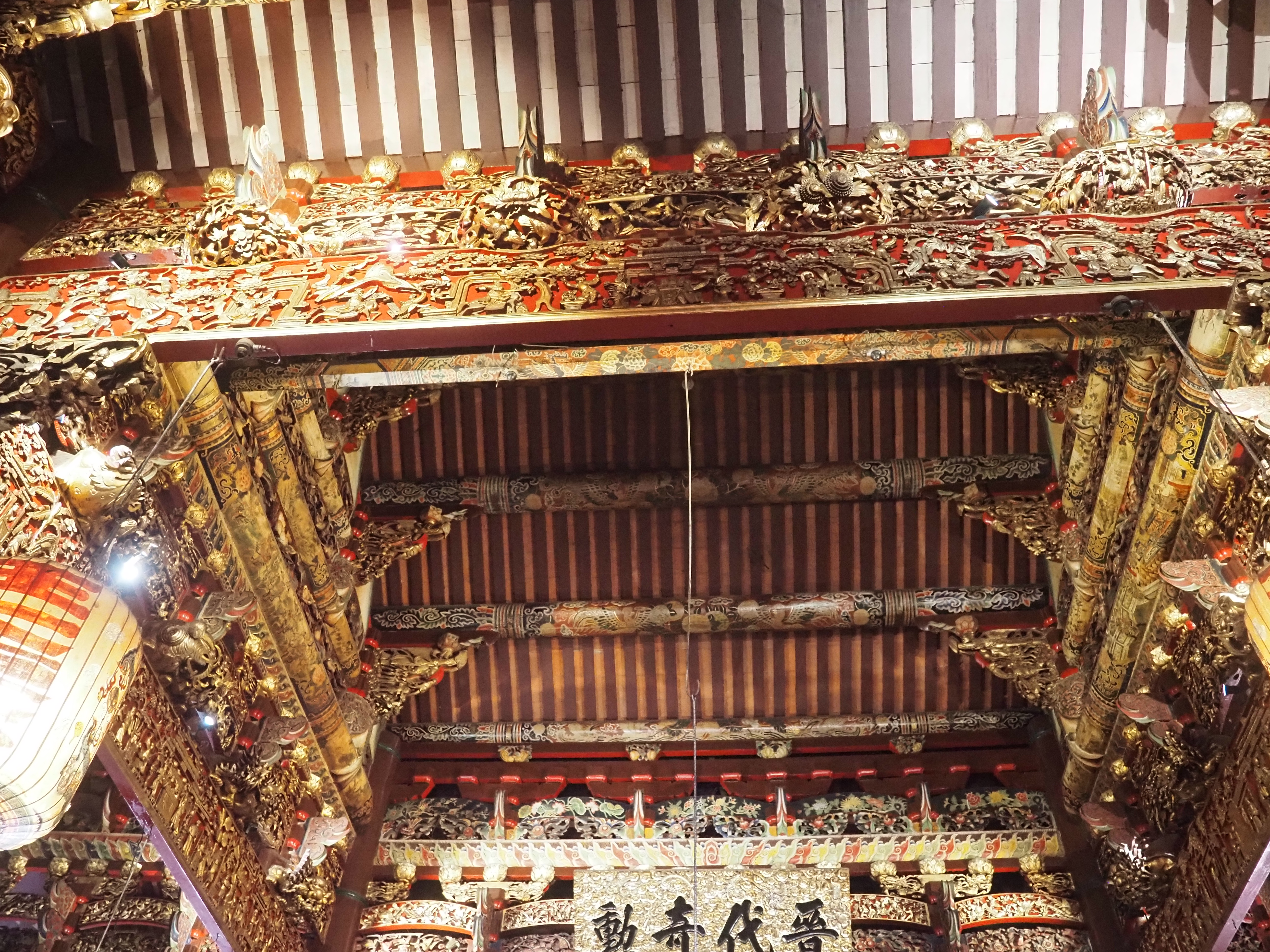
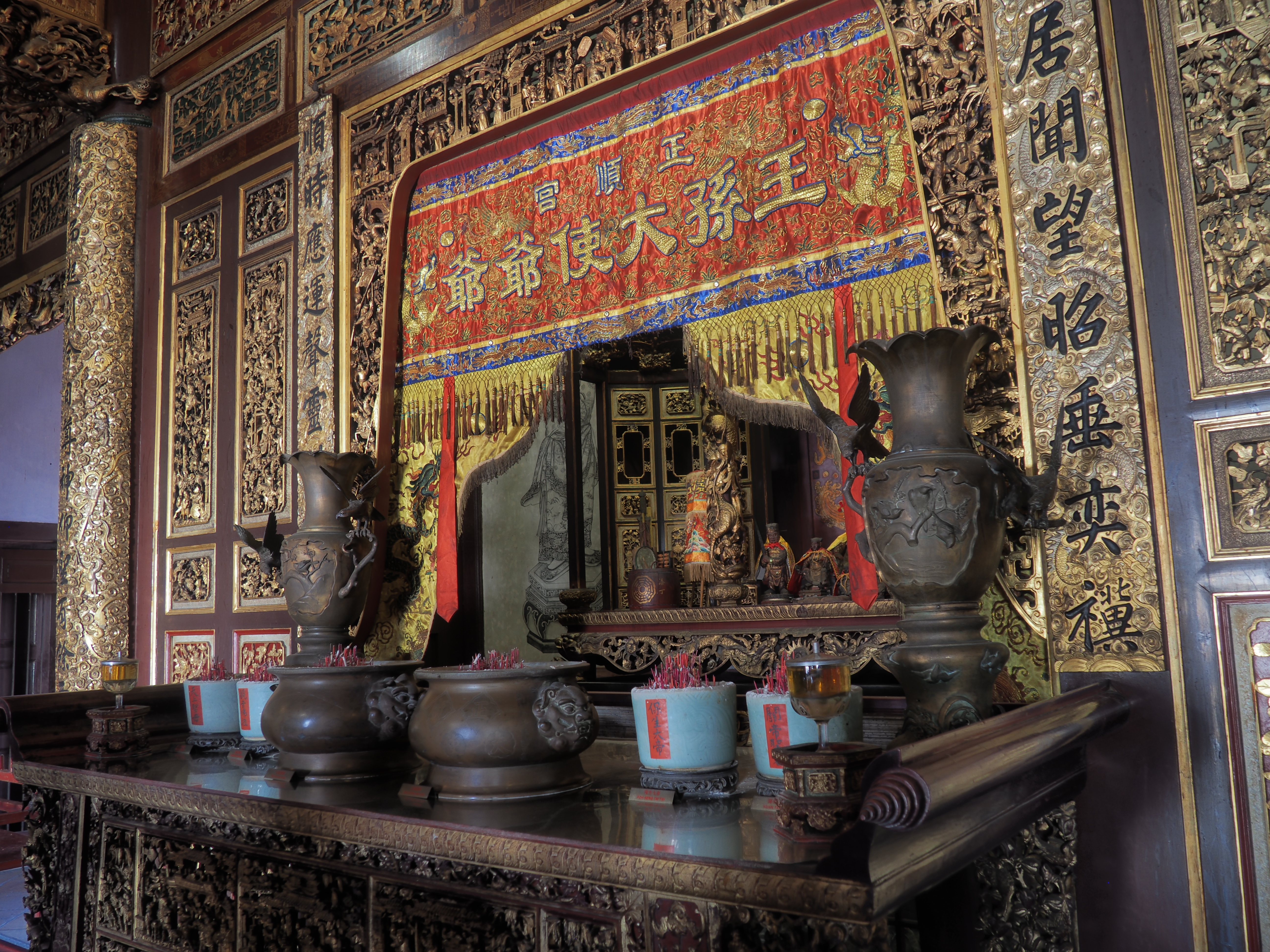
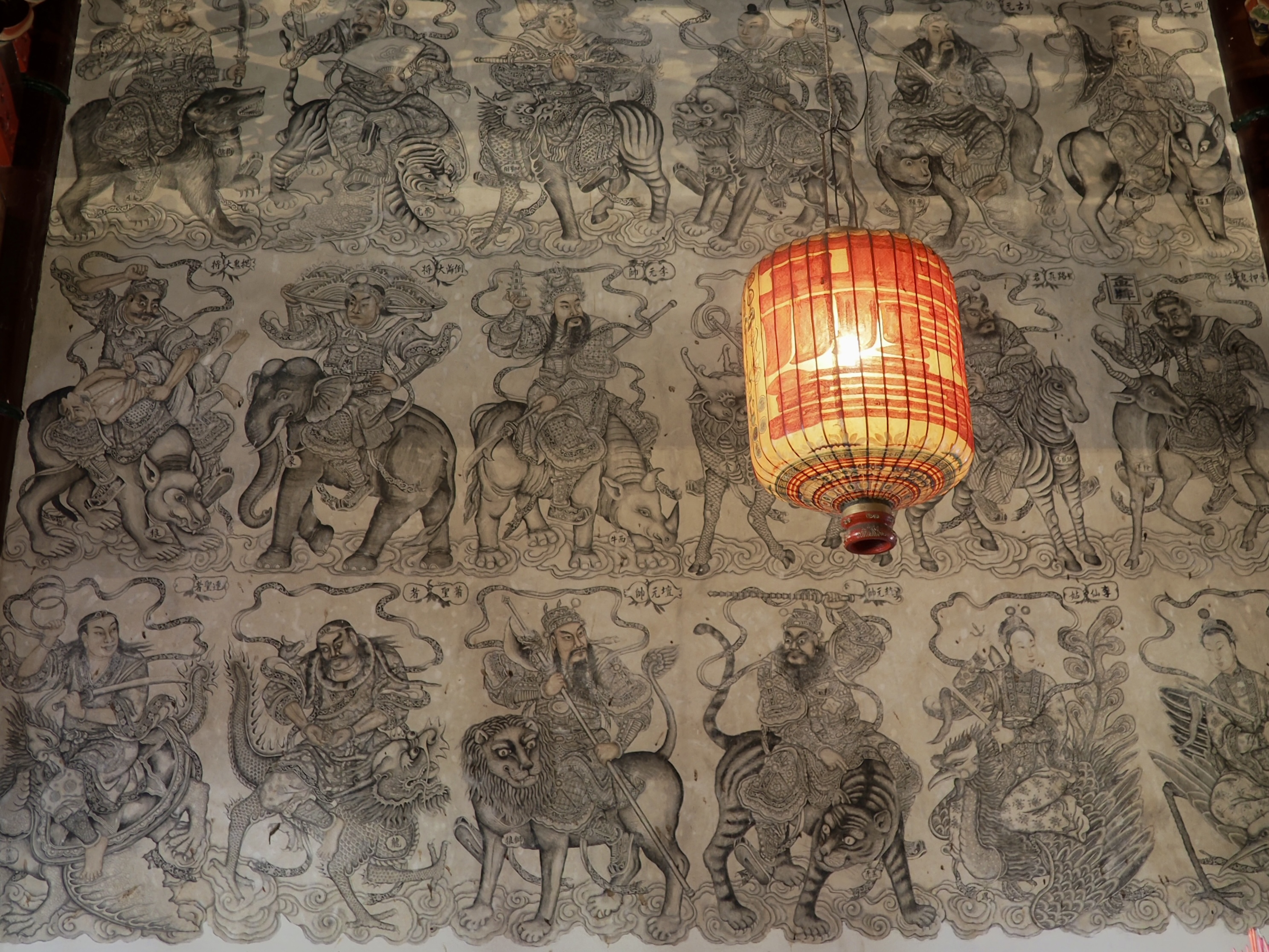
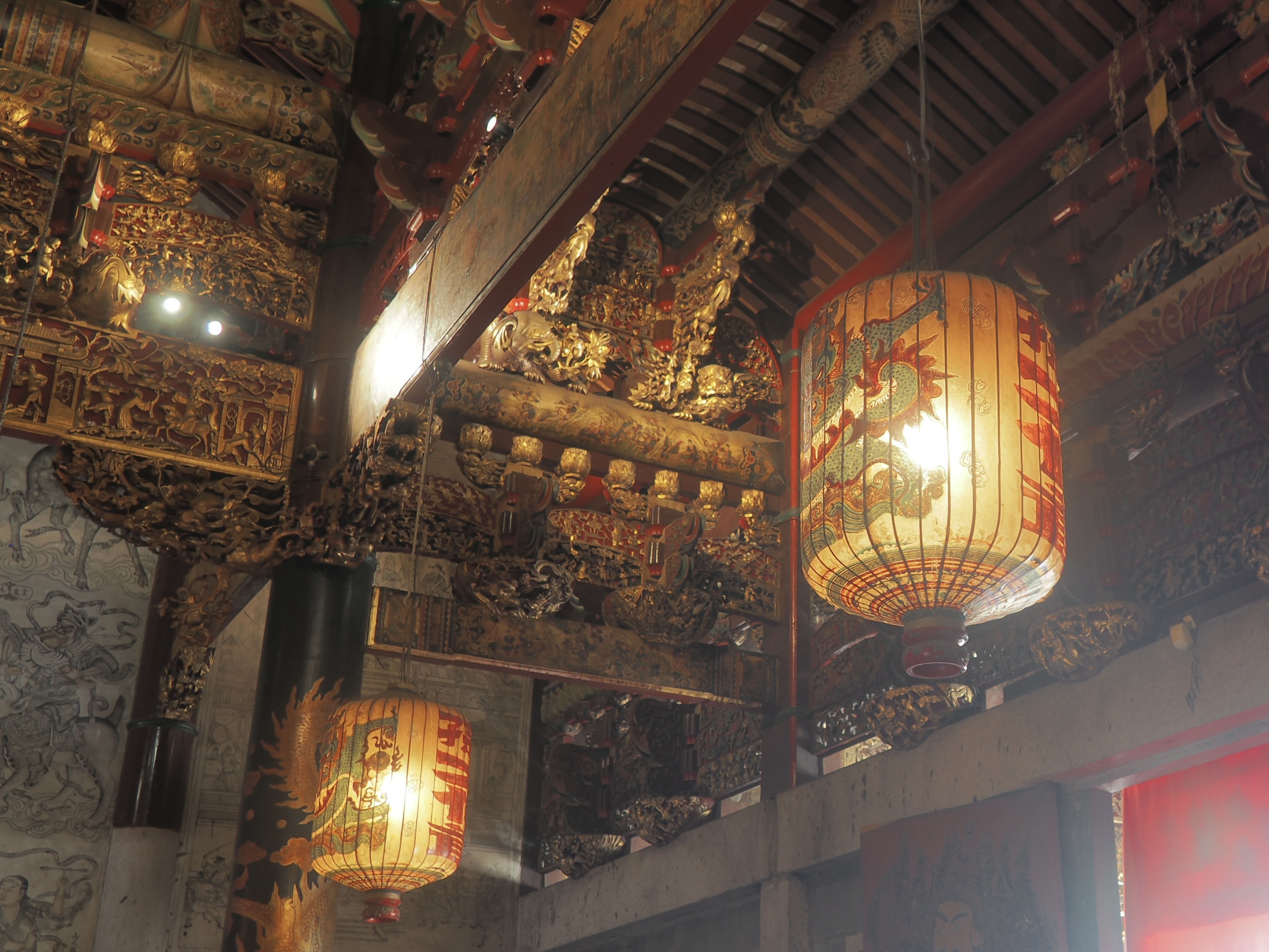
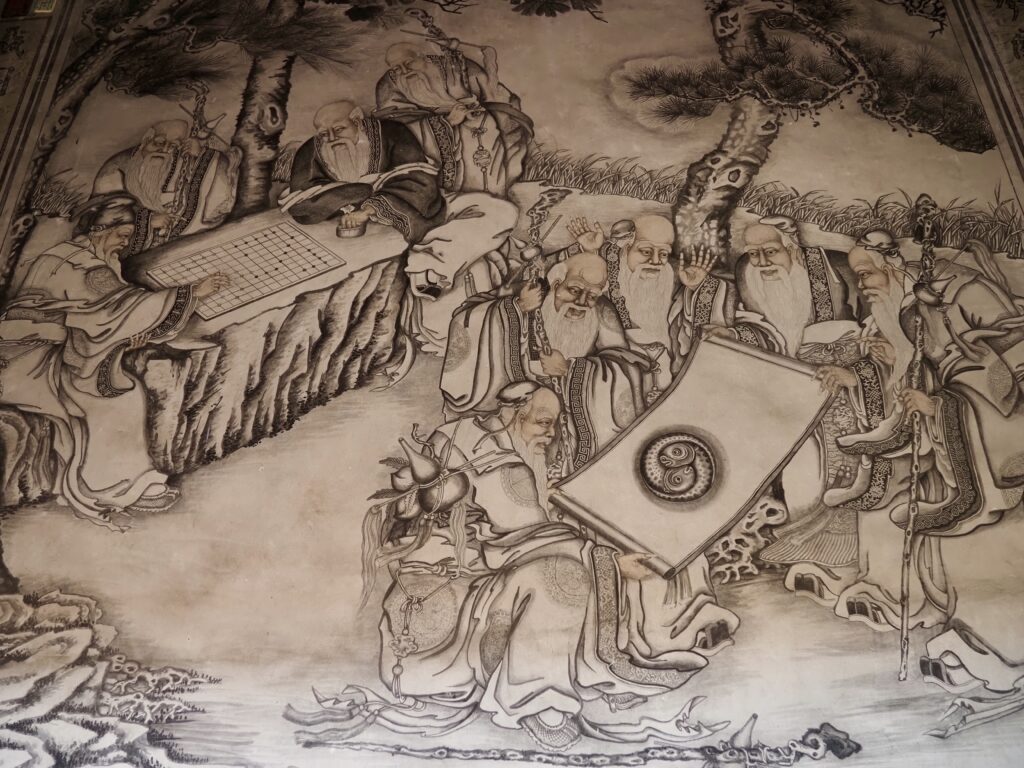
Chew Jetty
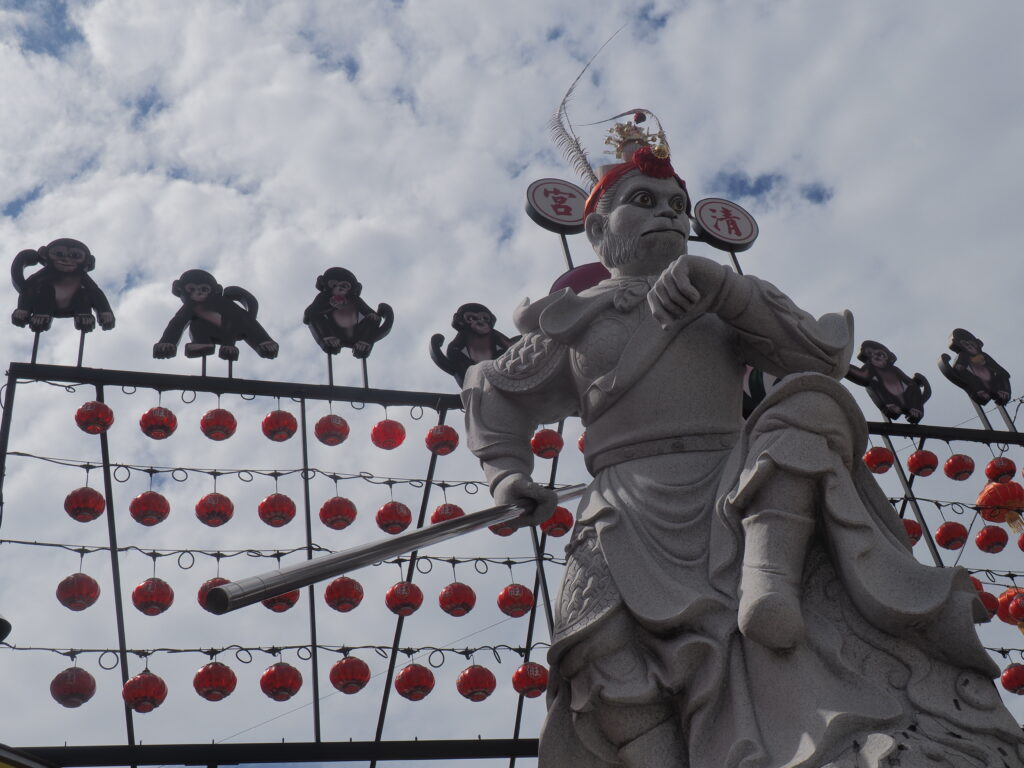
In mid 19th century George Town, impoverished migrants from China chose to build their communities on pilings over the water rather than pay a rather stiff British land tax. The largest of the 6 remaining clan jetties (which function a bit like a clan house for the less well off) is Chew Jetty, a ramshackle village of 75 homes, a few temples, and a lot of tourism fueled by the quaintness of it all.
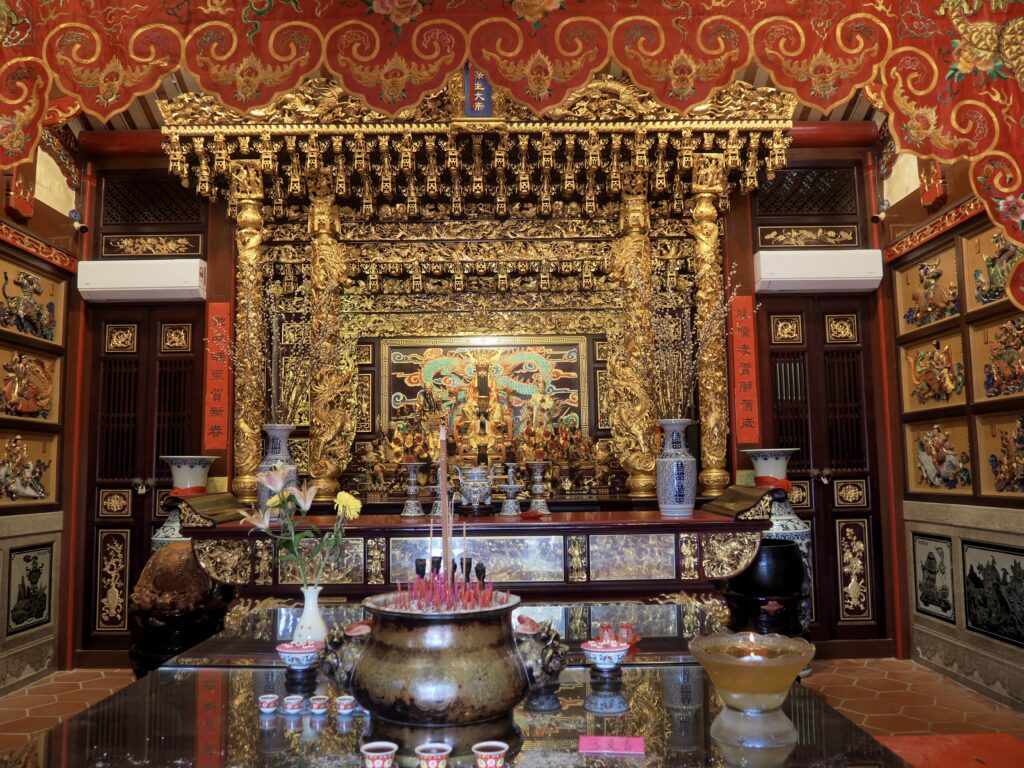
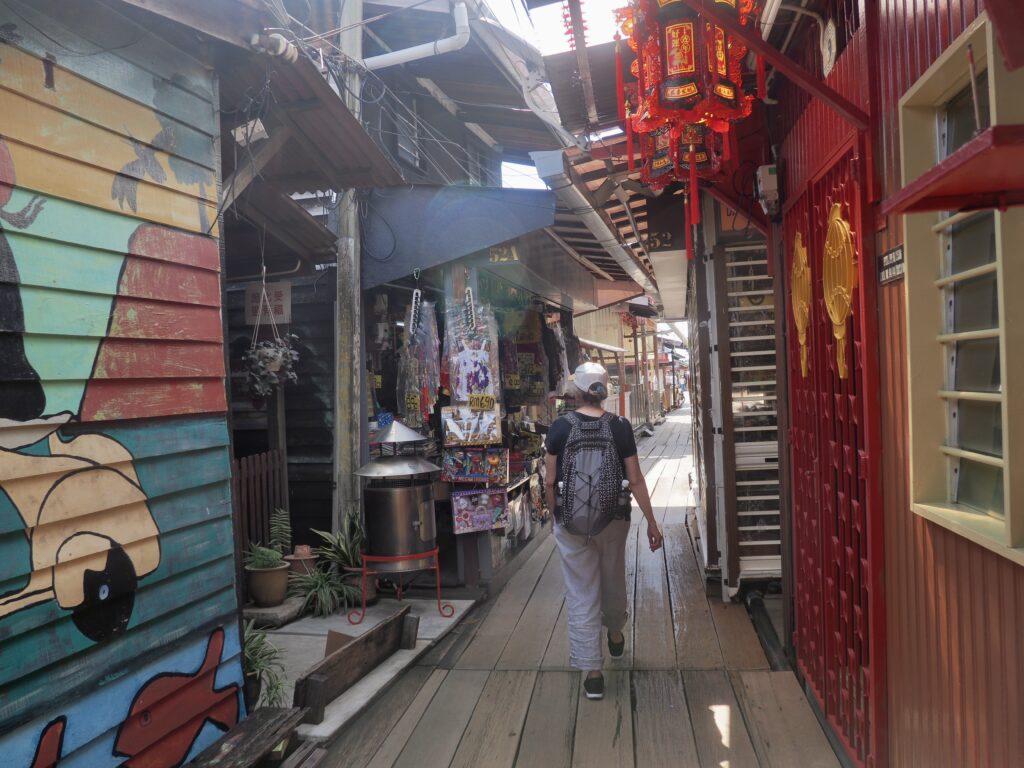




Some homes are really attractive, others less so, as you’d expect in any longstanding neighborhood. Some residents work off the jetty, others have a small shop or food business in the front. We felt fortunate to be wandering around in an ebb of tourism.




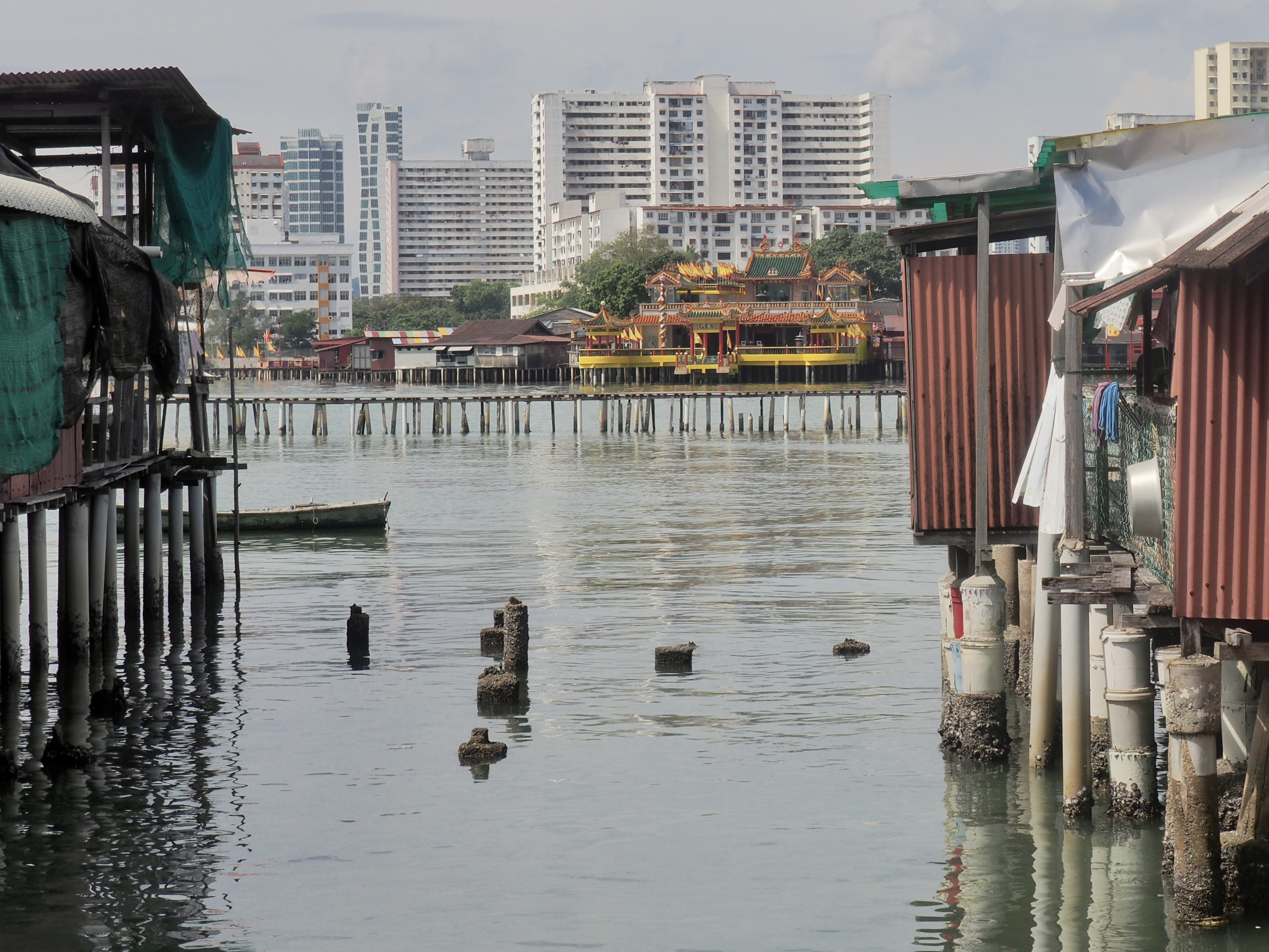

The jetty really is an extension of the city, specifically of Chinatown, but with boats.
Kapitan Keling Mosque
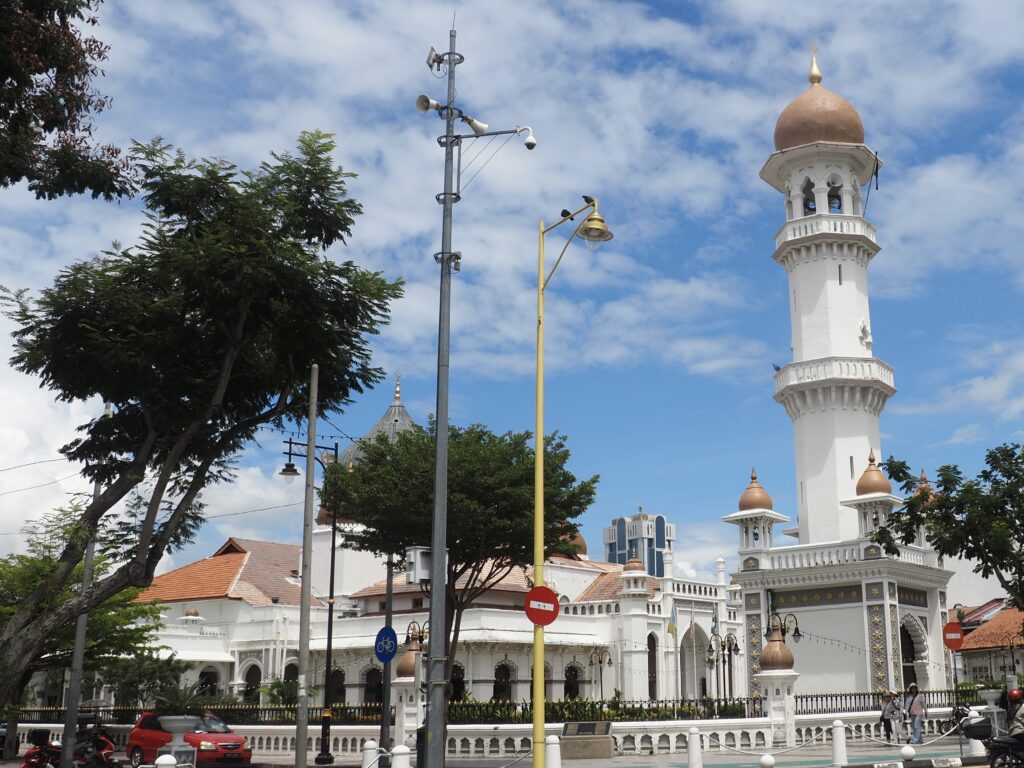


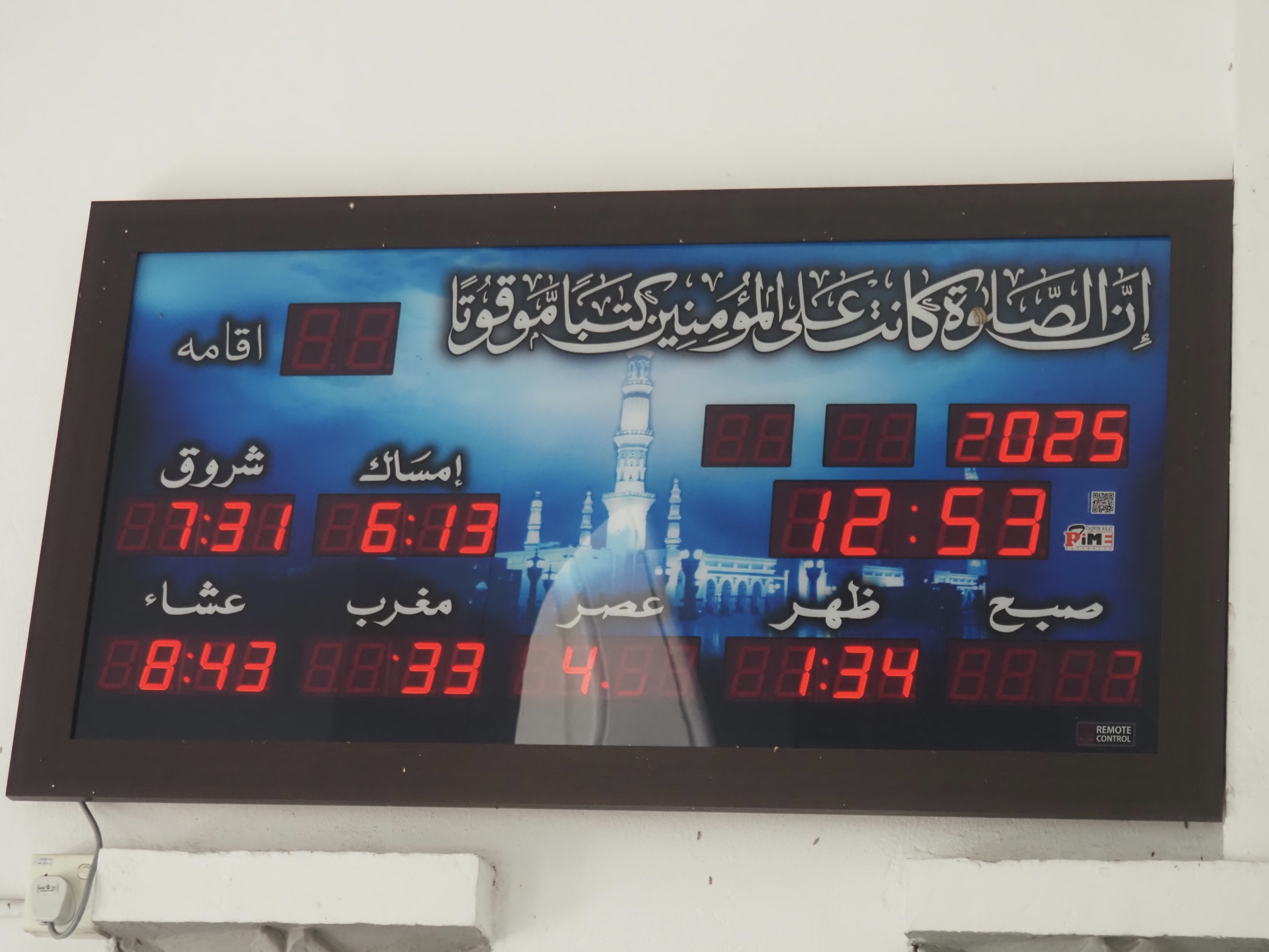

Kapitan Keling Mosque is the oldest in Penang, initially built by East India Company troops on their posting to Penang around 1801. “Kapitan” is an honorific for an Indian leader and “Keling” was a term used to refer to Indians, now typically considered offensive. The present edifice was constructed in 1916. The digital clock is used to keep track of the precise times for the five times per day call to prayer, varying as they do according to sunrise and sundown. As was the case in every mosque we visited in Malaysia, we were welcomed and provided with an explanation of Islam and how it relates to other Abrahamic religions. This time, it was even more engaging with an intelligent exegesis of Koranic scripture and a somewhat magical chanting of the basic tenets of faith by our young guide. Even though we weren’t “in the market,” it was a delightful experience.
Acheen Street Malay Mosque
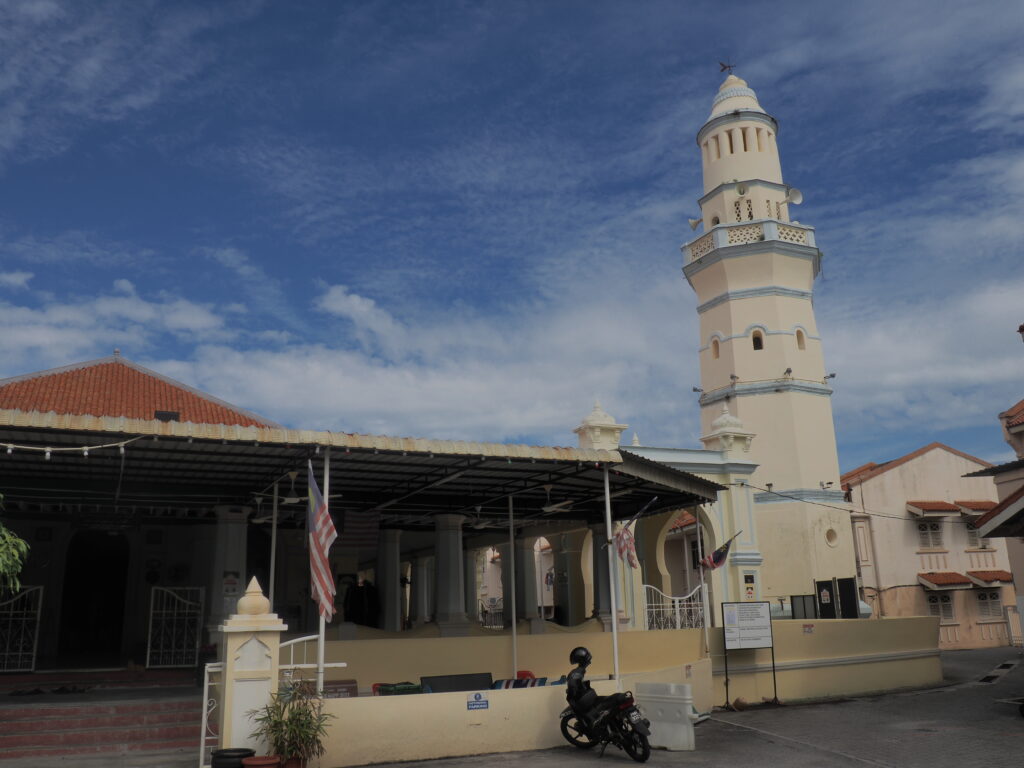




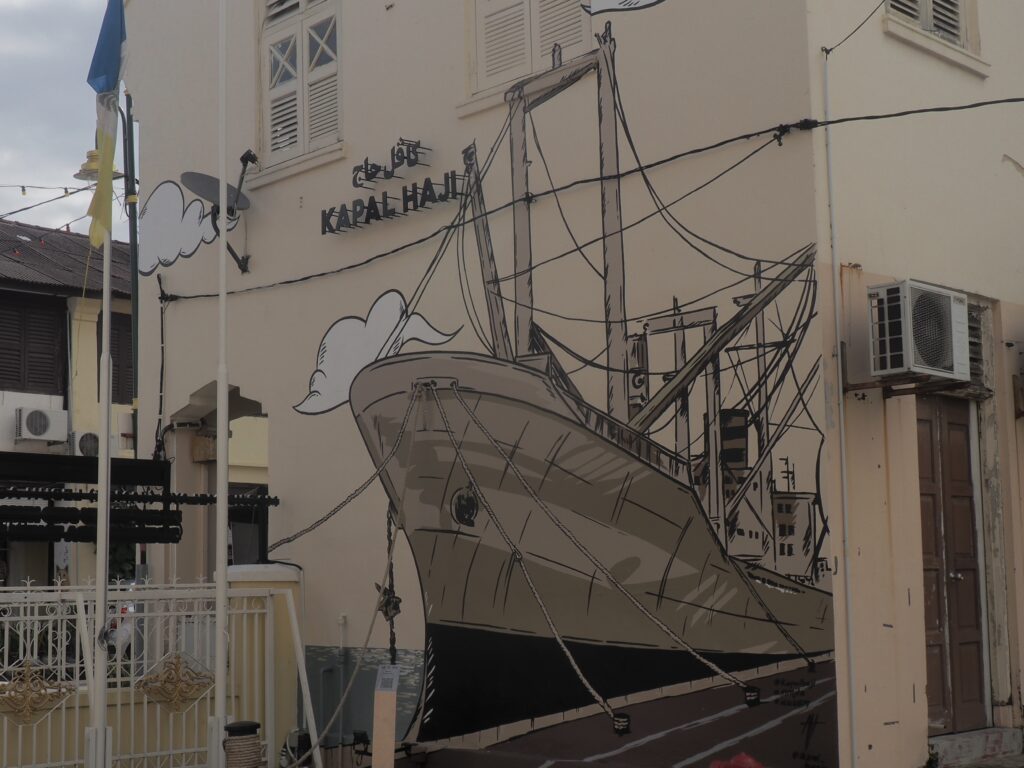
A wealthy Arab spice trader and member of the Aceh Sultanate’s royal family on Sumatra relocated to Penang where he built the Acheen Street Malay Mosque in 1808. From the mid nineteenth century, due to George Town’s strategic location on the Straits of Malacca, the Mosque became a favored spot for pilgrims on the Hajj to gather, perform their religious duties and prepare for the ongoing journey. When airplanes overtook ships as the preferred way to travel to Mecca, the Mosque became a reminder of the past.
Thean Hou Kong Temple
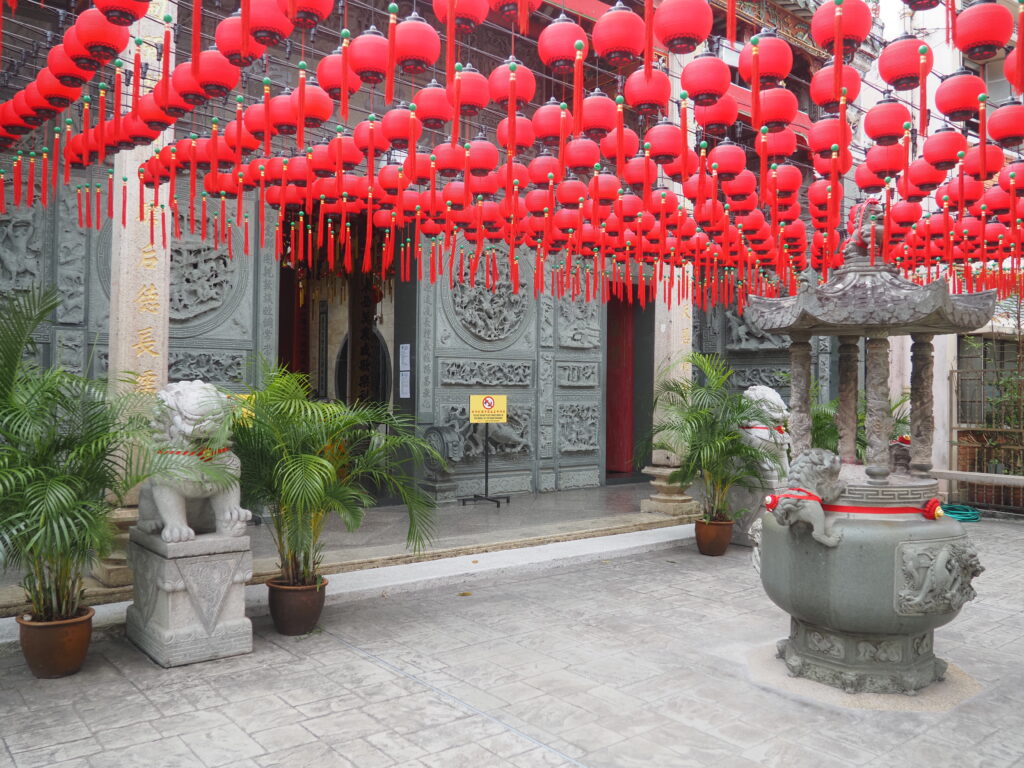
Dedicated to the Taoist Deity Mazu, protector of seafarers, Thean Hou Kong was built in 1895 by the community of Chinese immigrants from Hainan Island. It developed into the base for a clan association to support that community.






The Blue Mansion
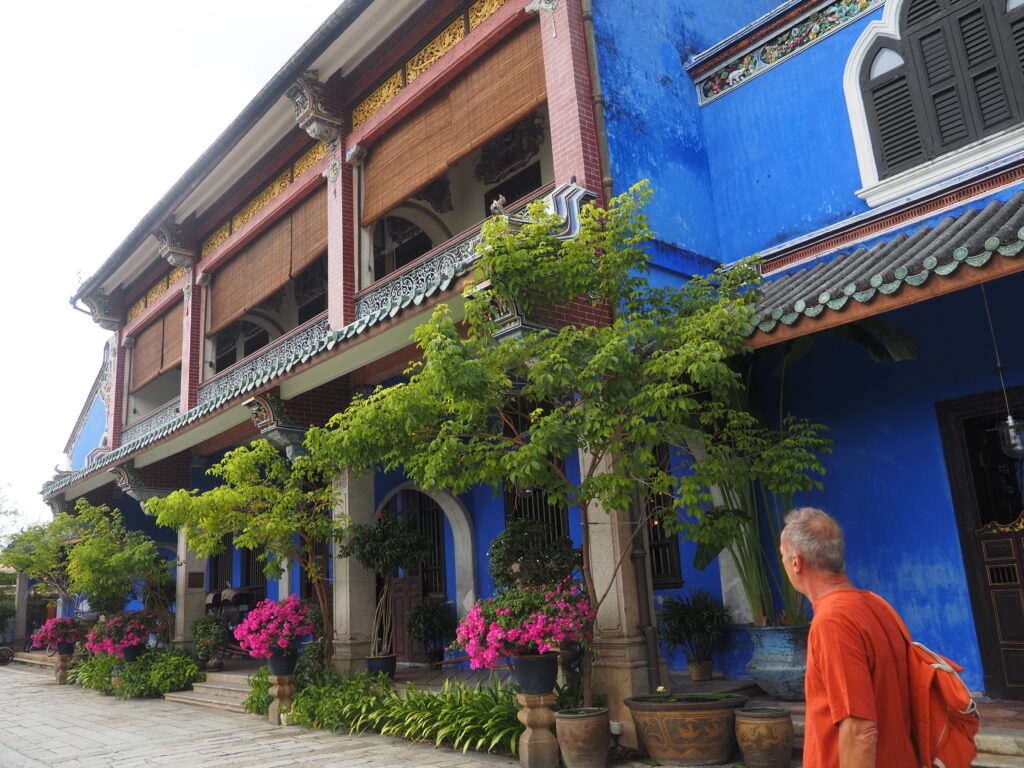
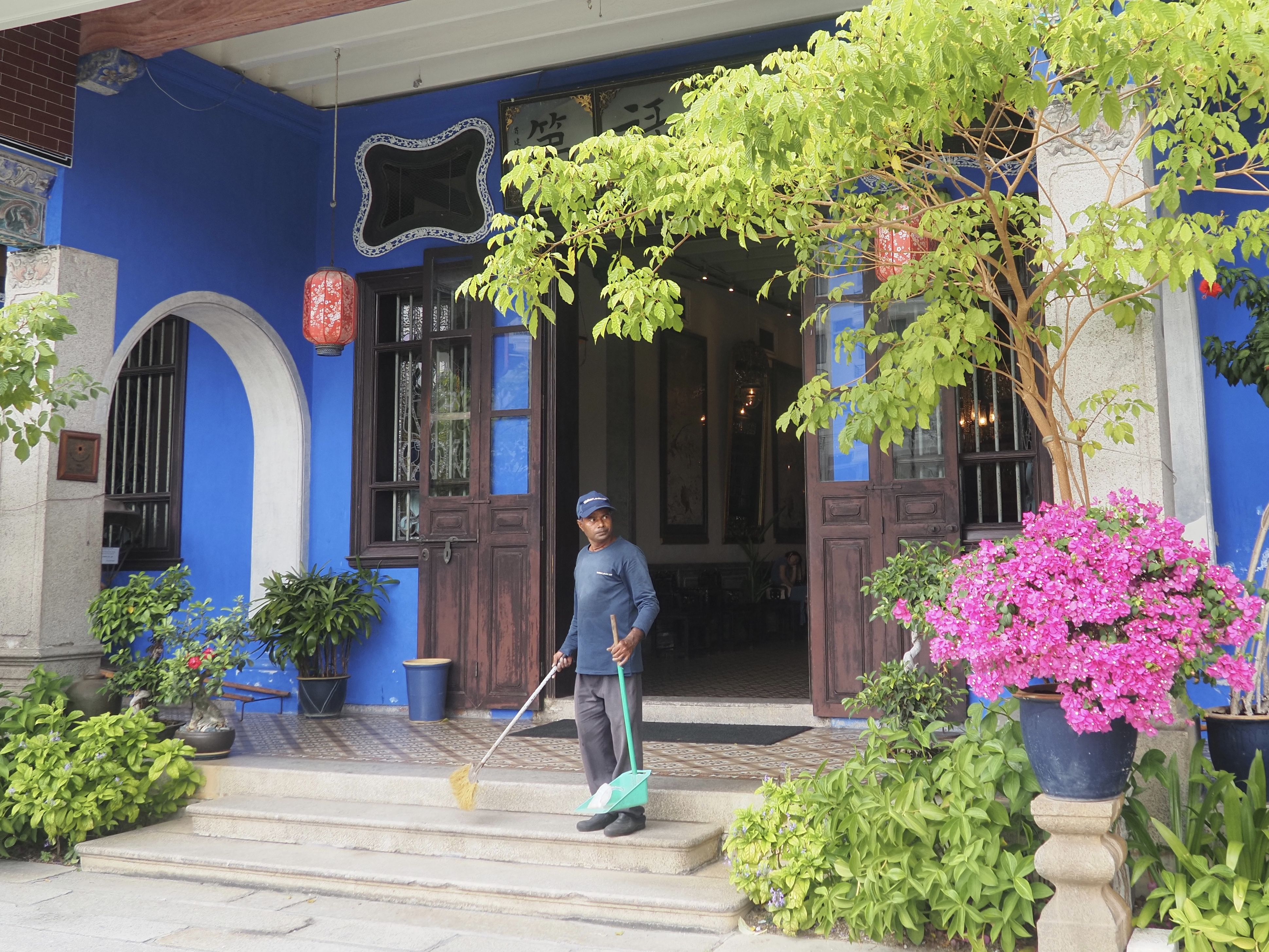

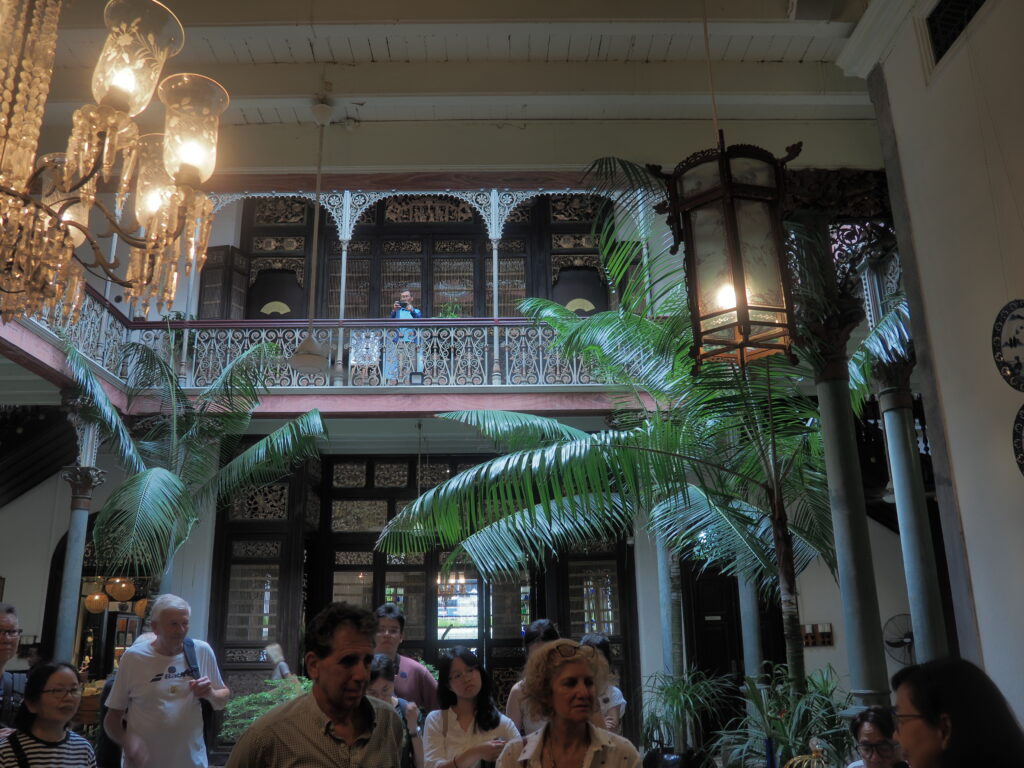



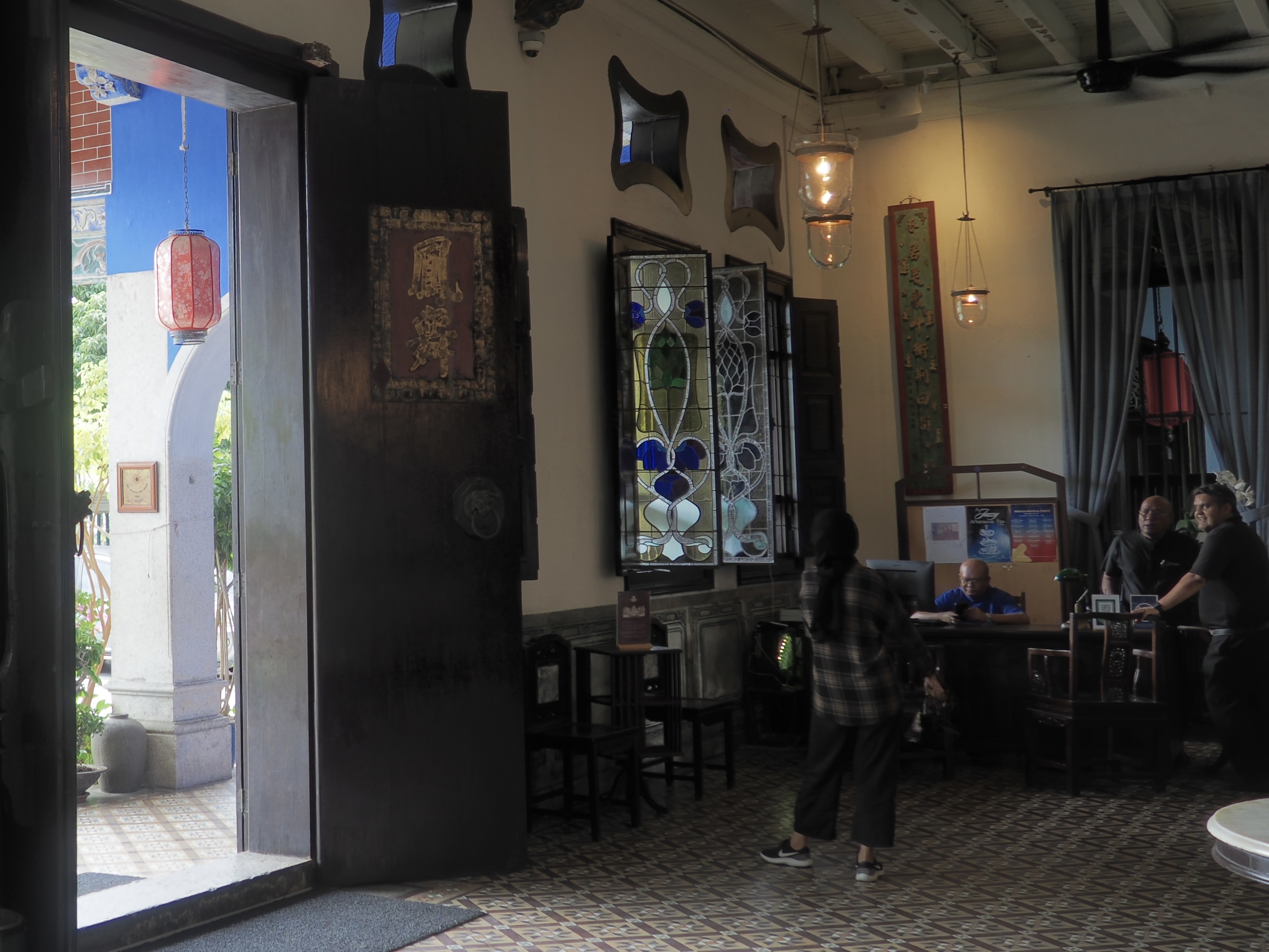
The Blue Mansion was the favorite of several homes of Cheong Fatt Tze (1840-1916), a rags-to-riches Hakka entrepreneur. Arriving in George Town penniless at 16, he rose to become a Consul General of China’s Qing dynasty (1644-1912), as well as Special Trade Commissioner for South-East Asia and a director of China’s first modern bank and its first railway, his death acknowledged with flags flown at a half-mast by the region’s Dutch and British colonial Governments.
Feng shui reigns among the 38 rooms, 5 courtyards, and 7 staircases, meticulously restored to its eclectic glory, fit to be a film set. In fact, it was indeed among the locations featured in Crazy Rich Asians, along with Khoo Kongsi. Although it fell on very hard times post-war, it was spared occupation by the Japanese in WWII because it was mistaken for a temple, that misapprehension abetted by the household staff shaving their heads in the fashion of monks.
Penang Hill and The Habitat
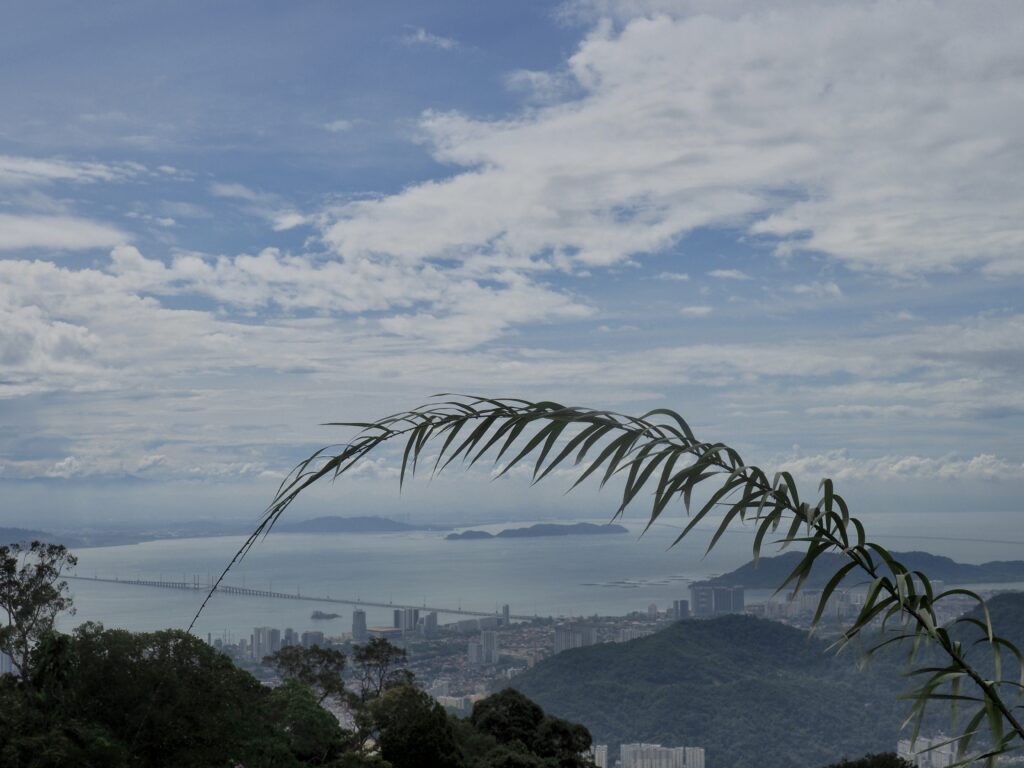
It’s noticeably cooler up here on Penang Hill, roughly 2500’ above the city after a five minute 2 kilometer ride up the funicular to the pedestrian-only biosphere reserve, already busy before even mid morning. There’s a kind of resort with quite a few attractions, a mosque, a temple, a simulation of earthquakes and typhoons for the under-stimulated, restaurants, very helpful volunteers to get you pointed in the right direction, and a place called The Habitat.




That’s where we head, escorted by one of those really helpful volunteers.



The Langur Way Canopy Walk is the longest two-span stressed ribbon bridge in the world (although we’re not sure what that means) and the Curtis Crest Tree Top Walk is even scarier (per Jim) getting you up beyond 2600’ walking in a circle back to your starting point. Both do provide stunning views.





We searched fruitlessly for the lemur a ranger had seen sleeping on a tree trunk, but did spot an eagle in a tree and thoroughly enjoyed wandering the park.


The Black Giant Squirrel (the size of a house cat) was the sighting we were most interested in and we met success just before leaving the reserve, nicely capping our time in George Town and Penang, one more place it was sad to leave.





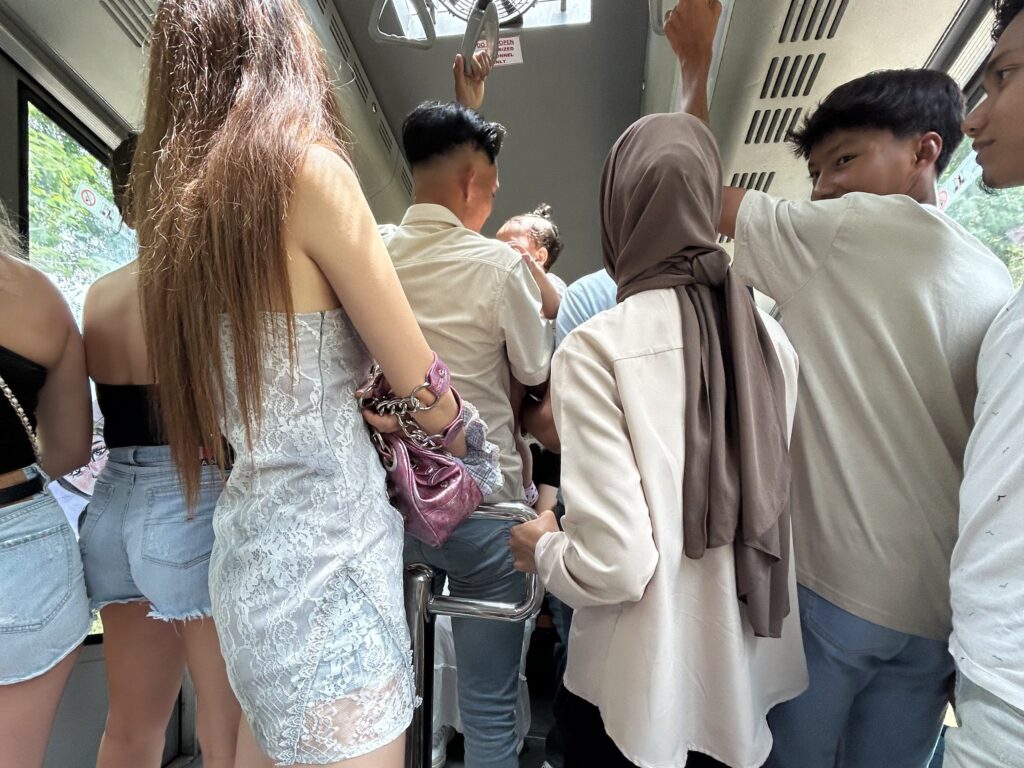
But, leave we must, back down in the funicular with a motley group, down to George Town, a Grab ride into town. We noticed that the young woman with the purple handbag was coming back to earth without the young man with whom she had had a raging quarrel in the Habitat. Life goes on.
